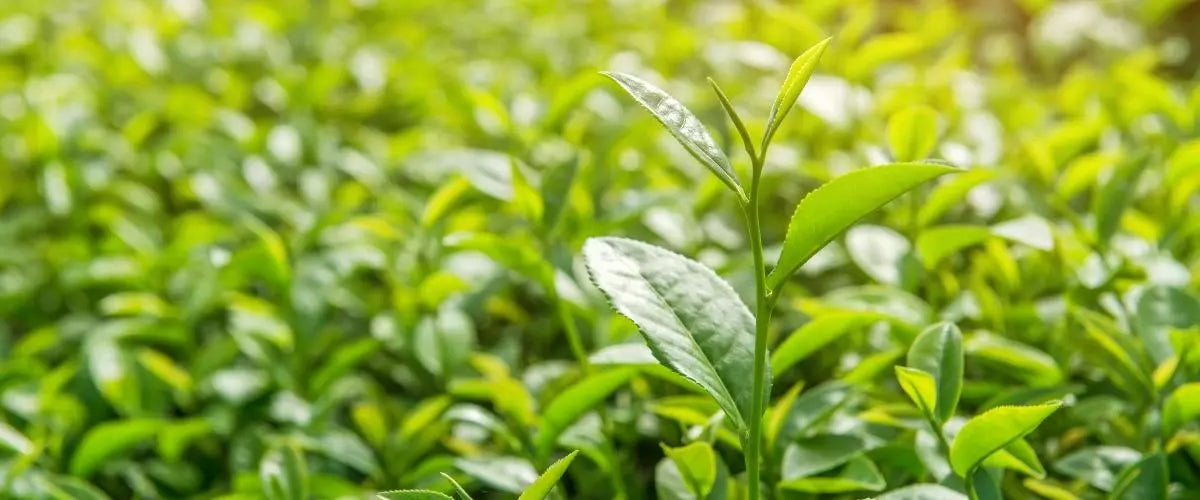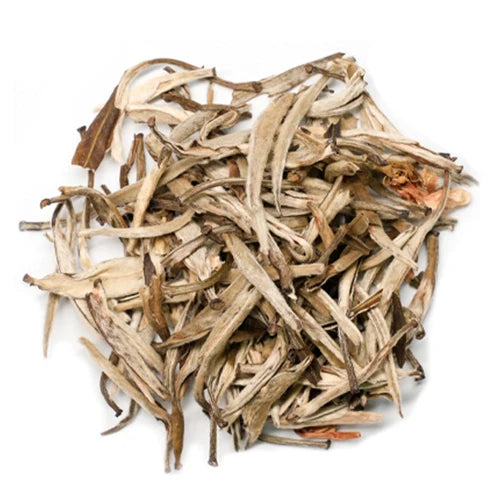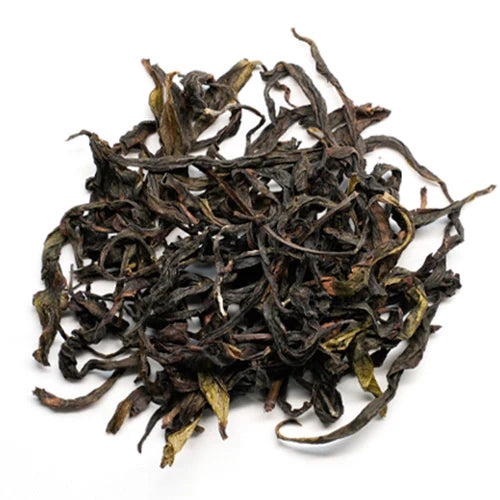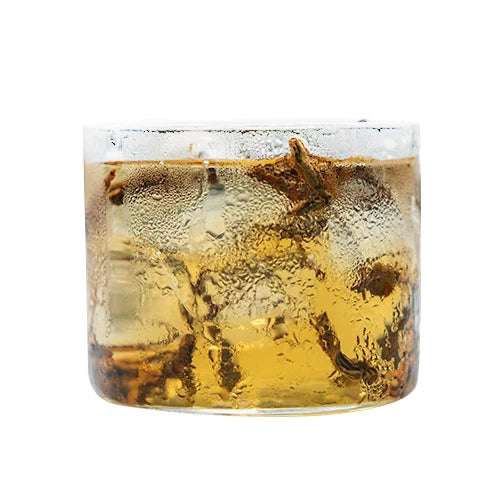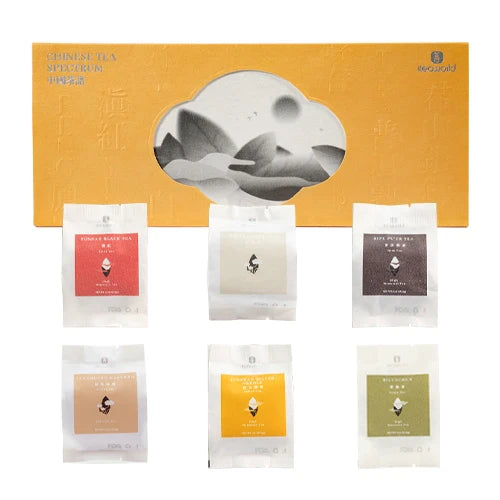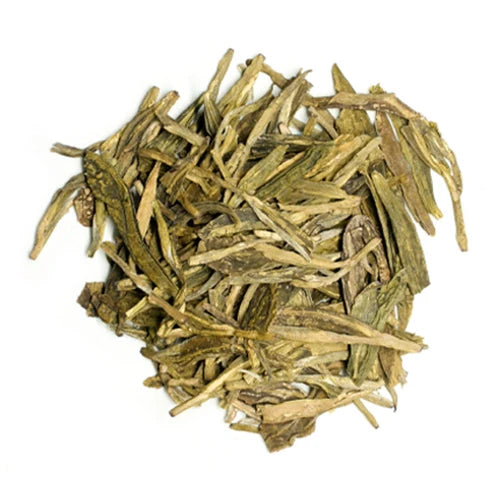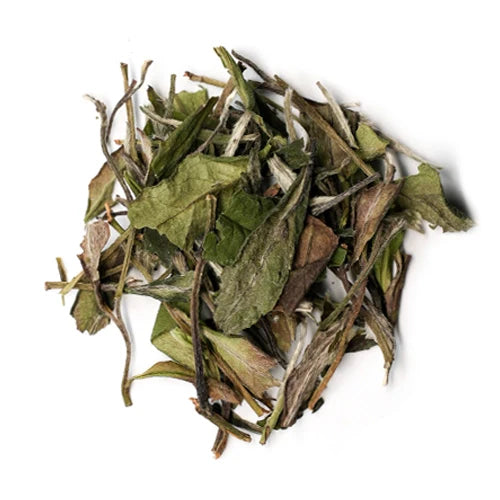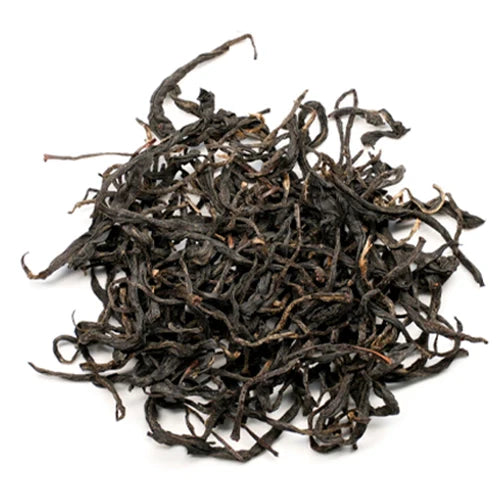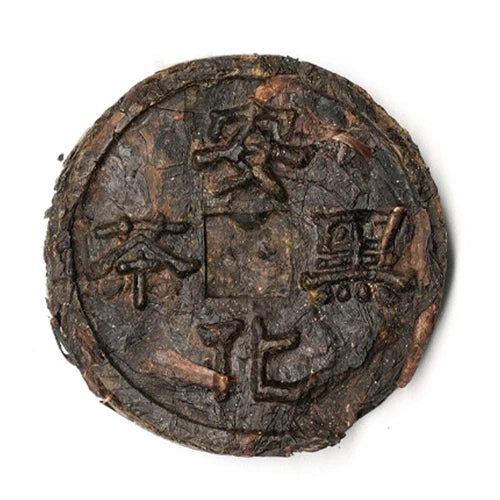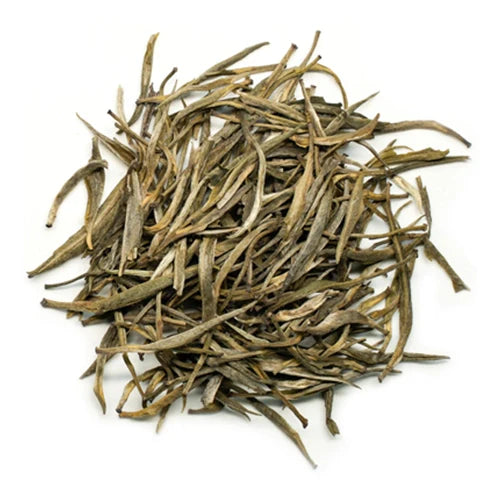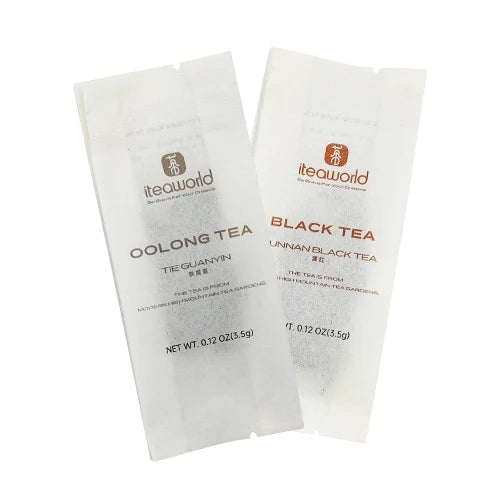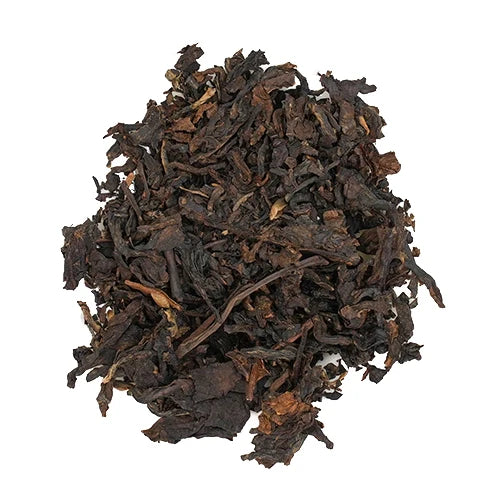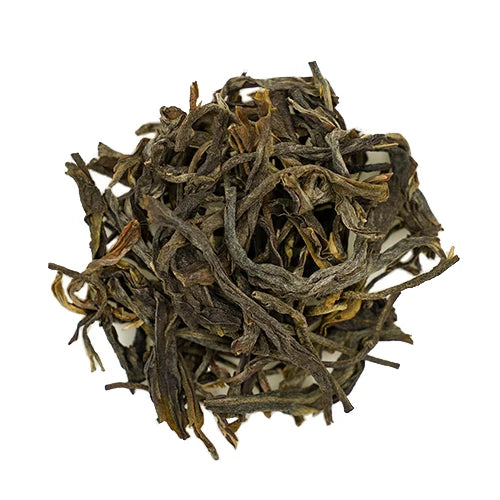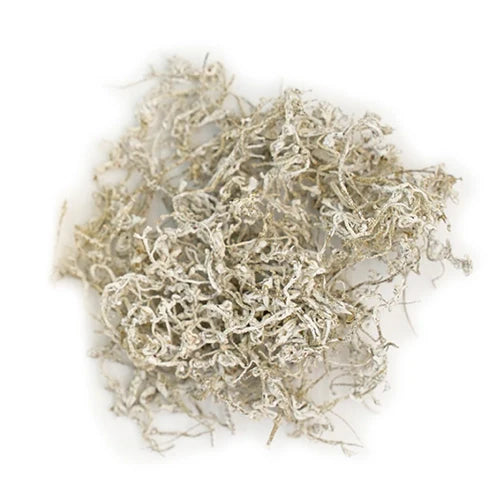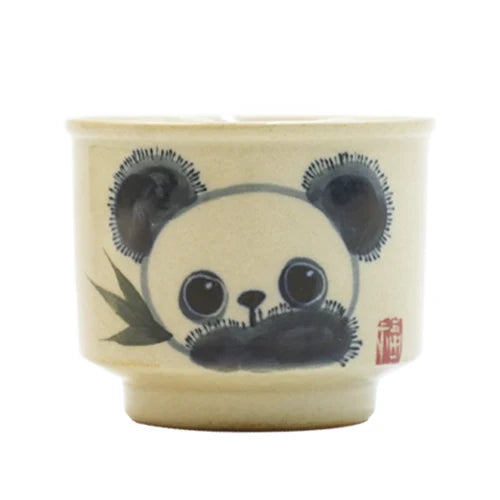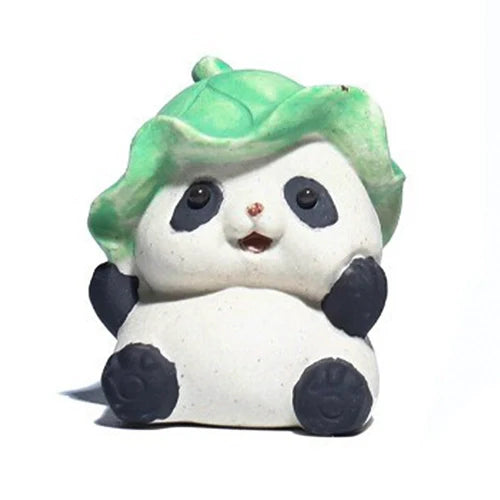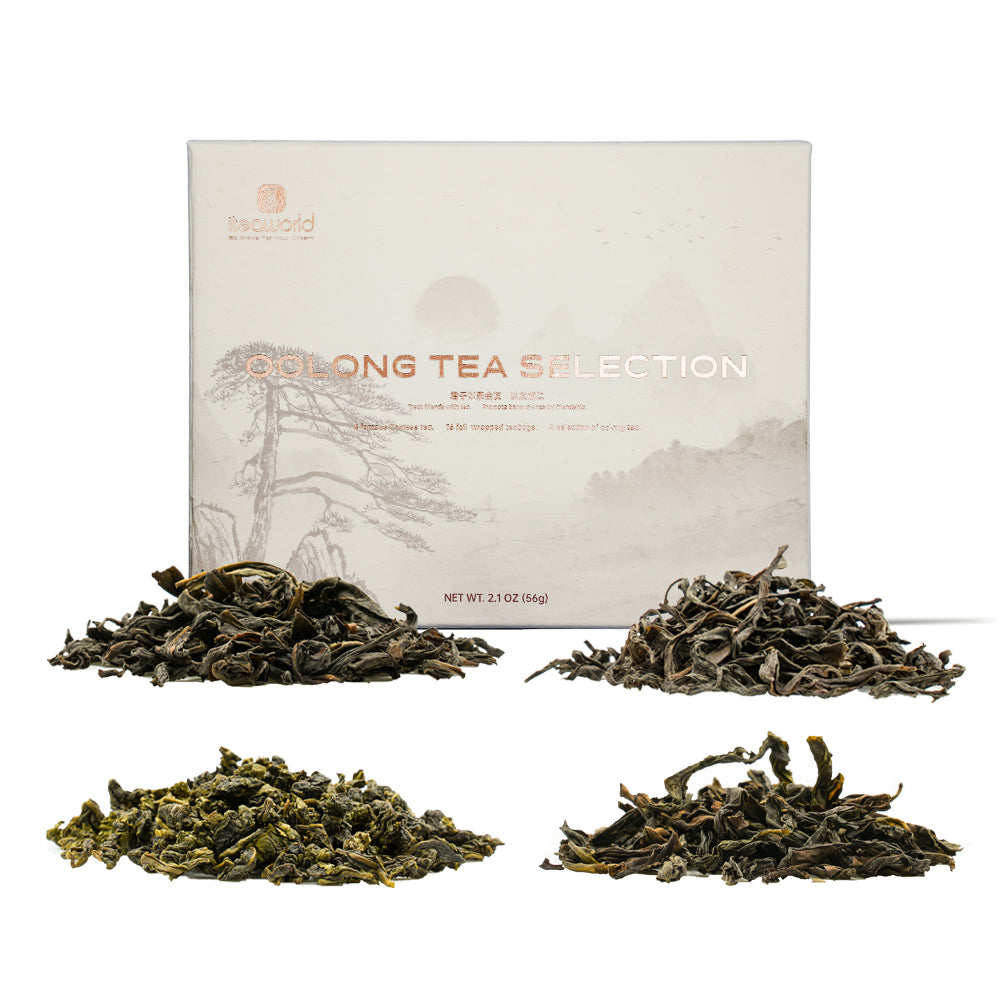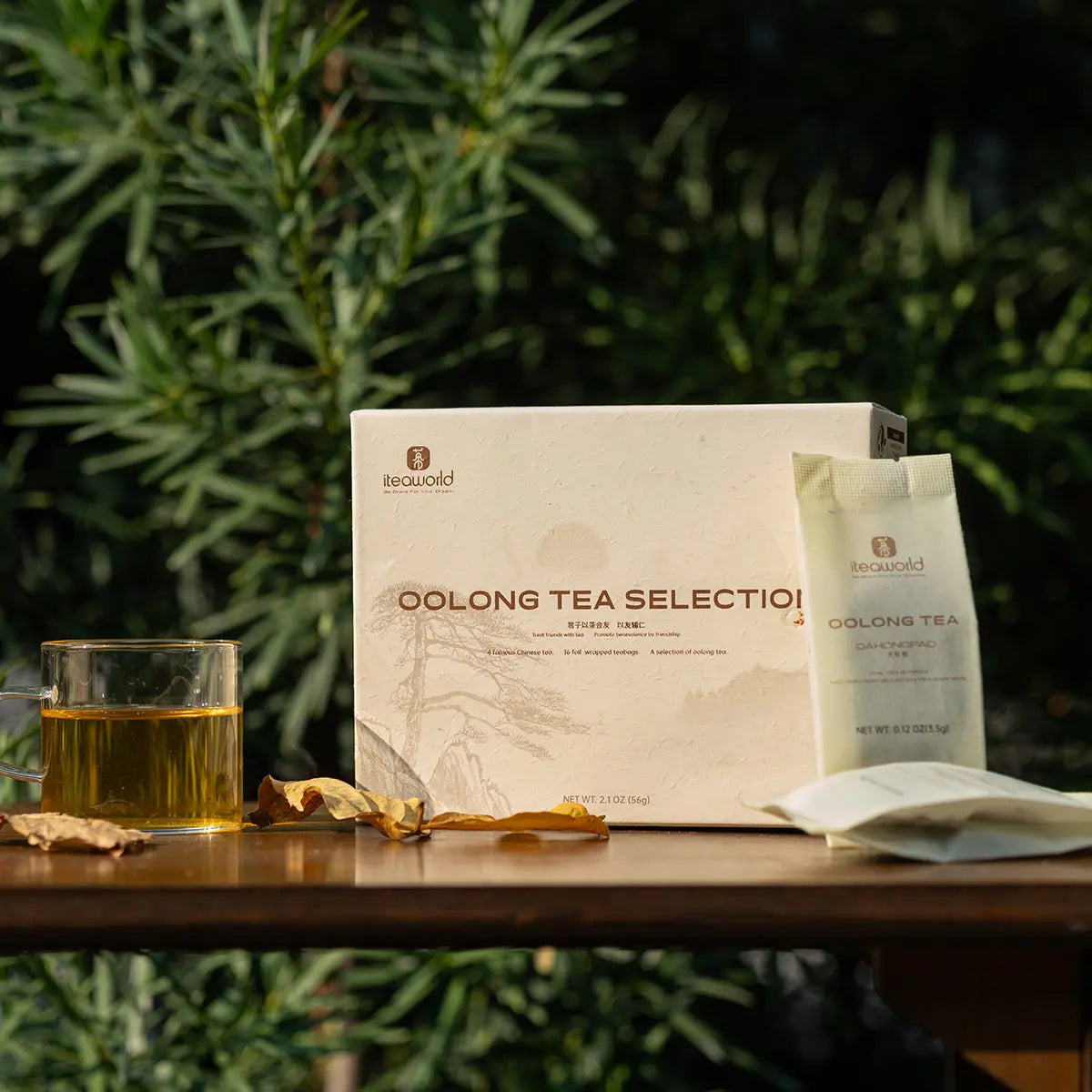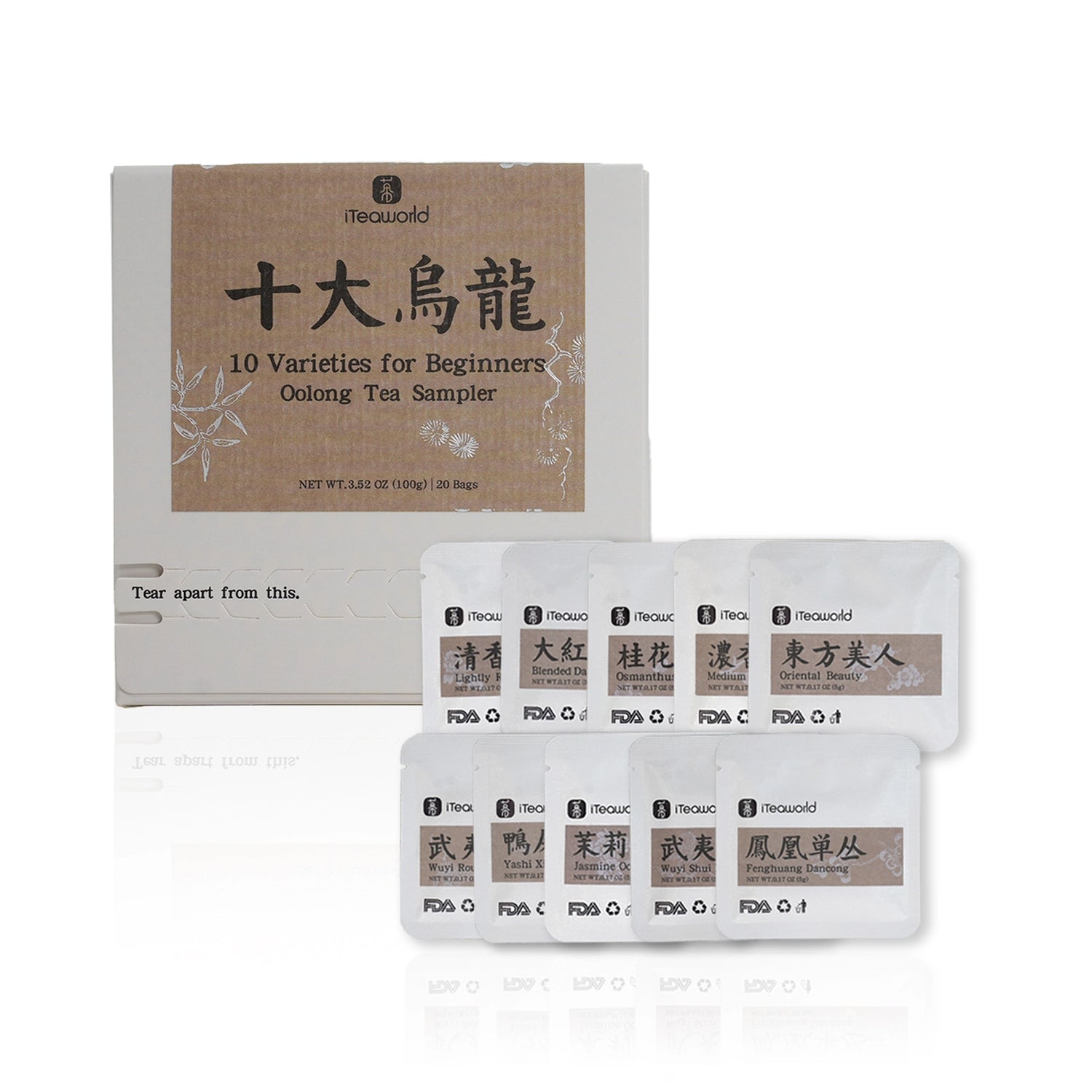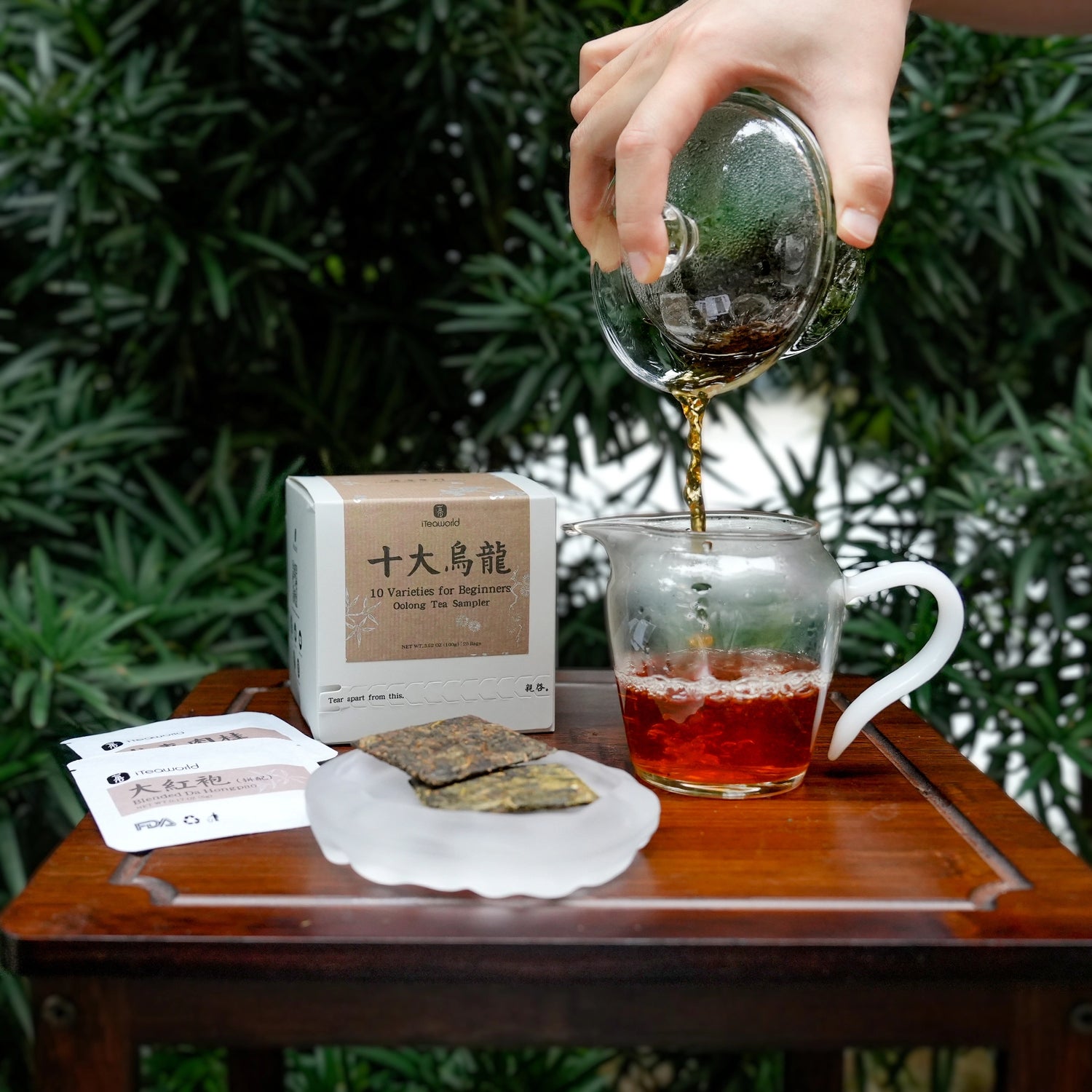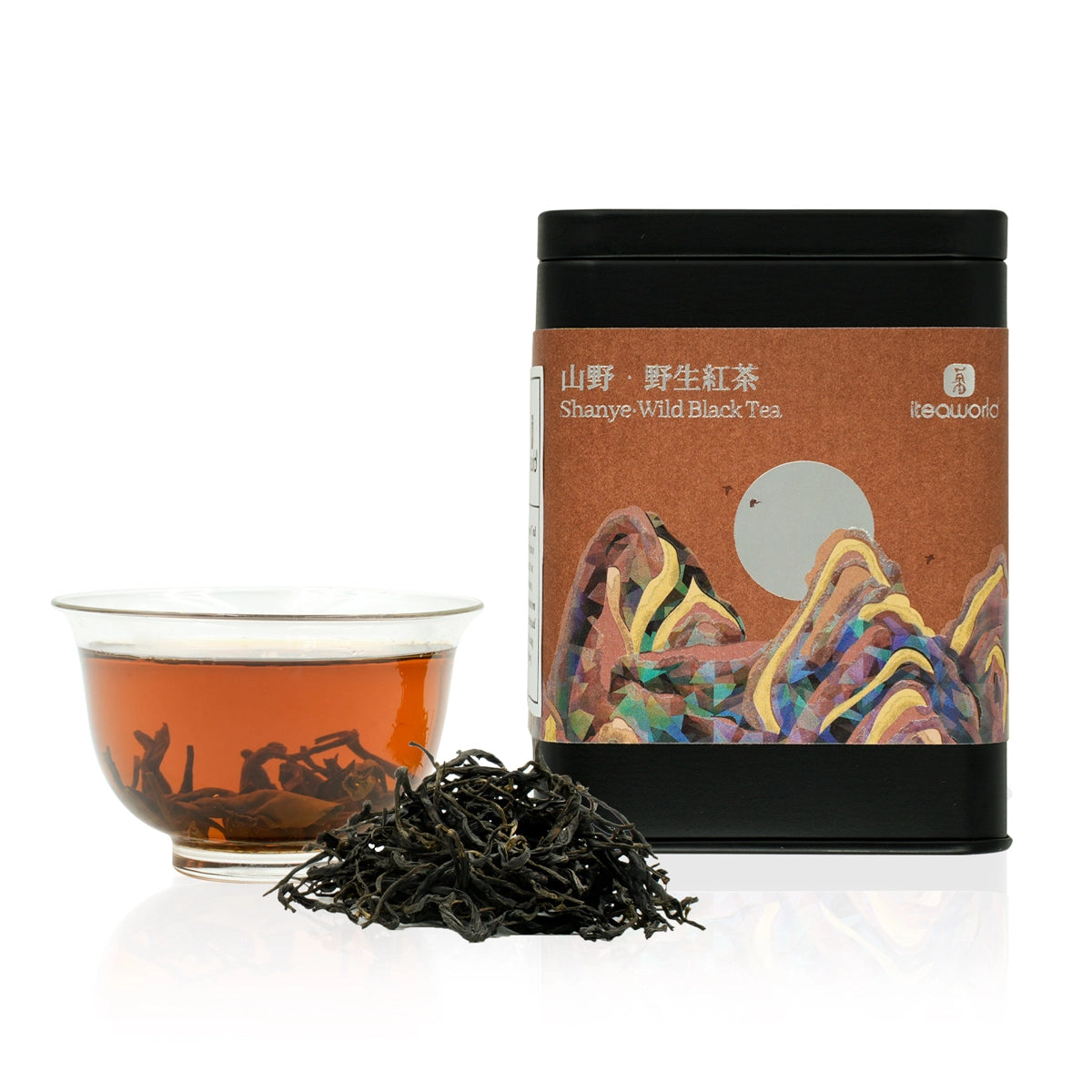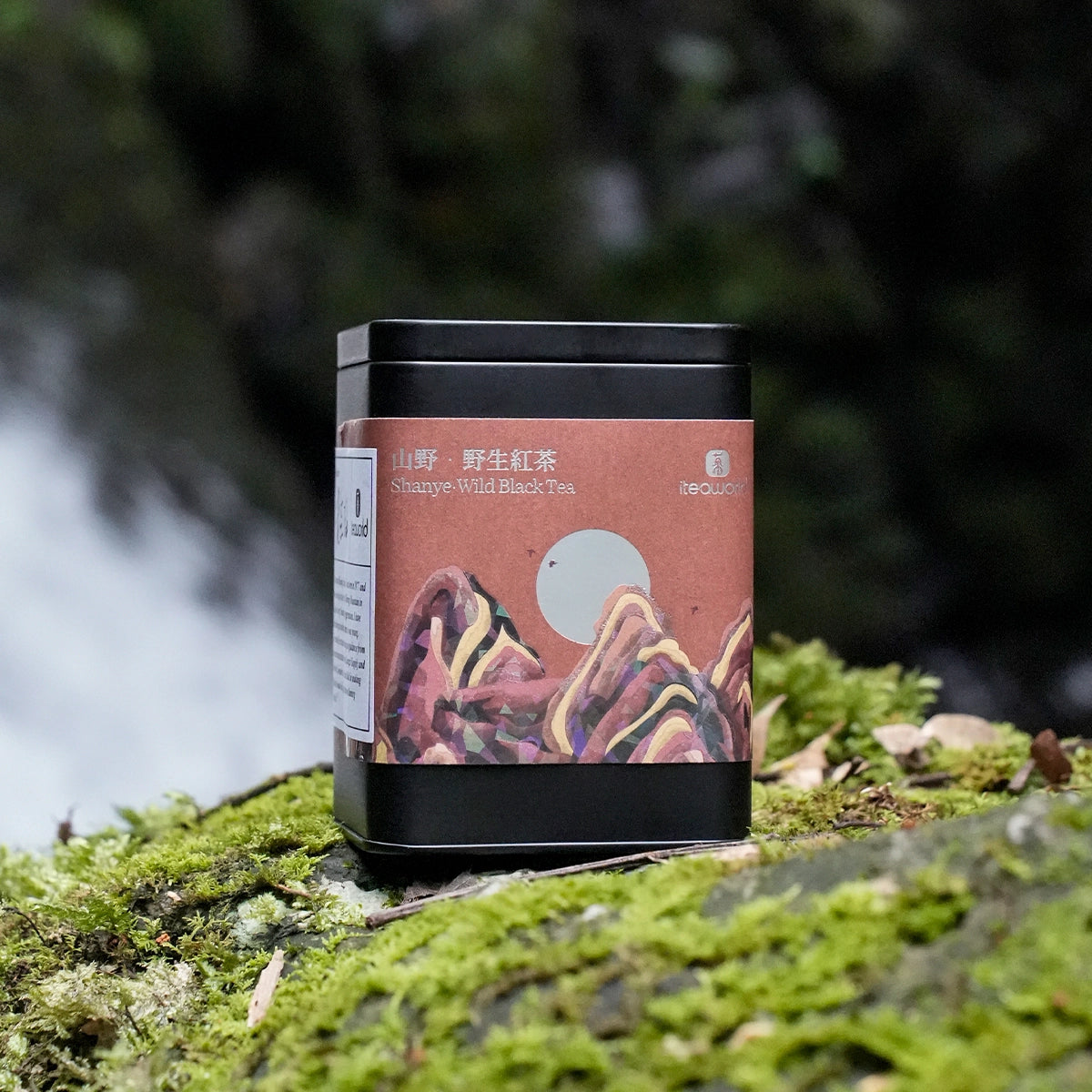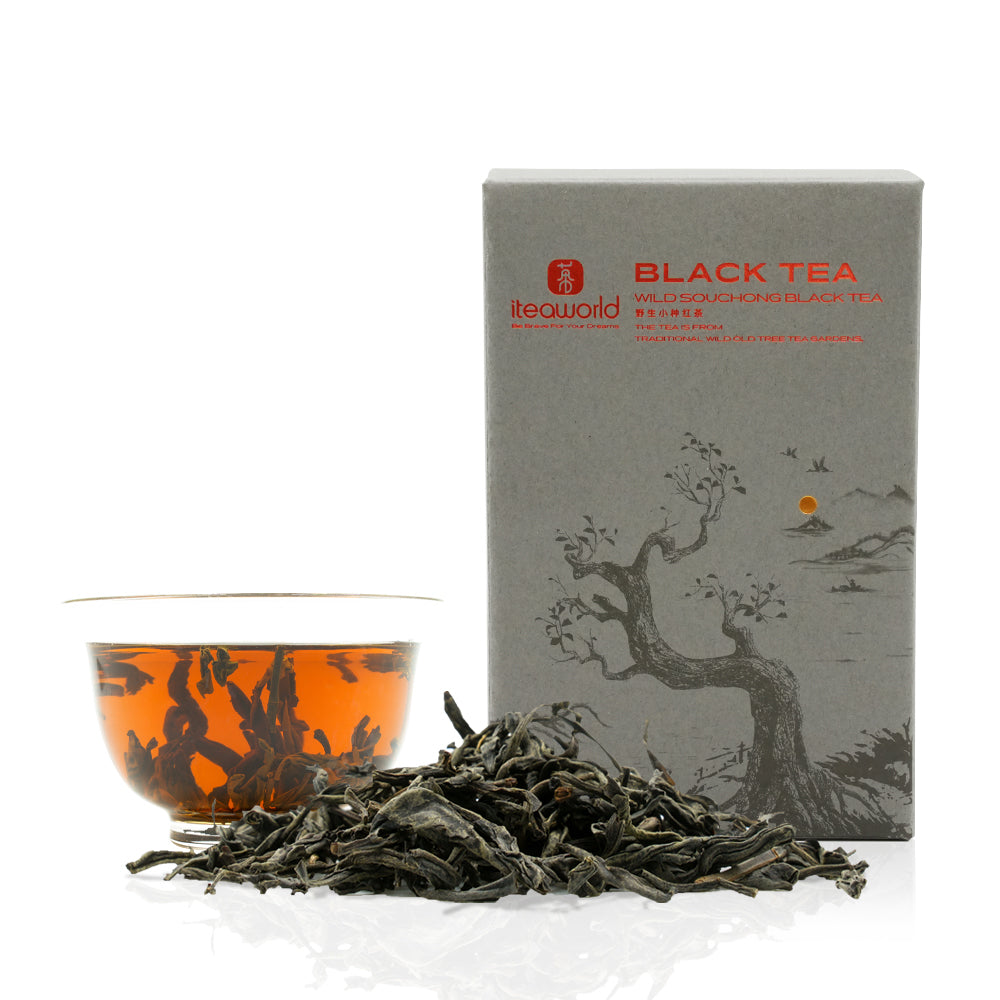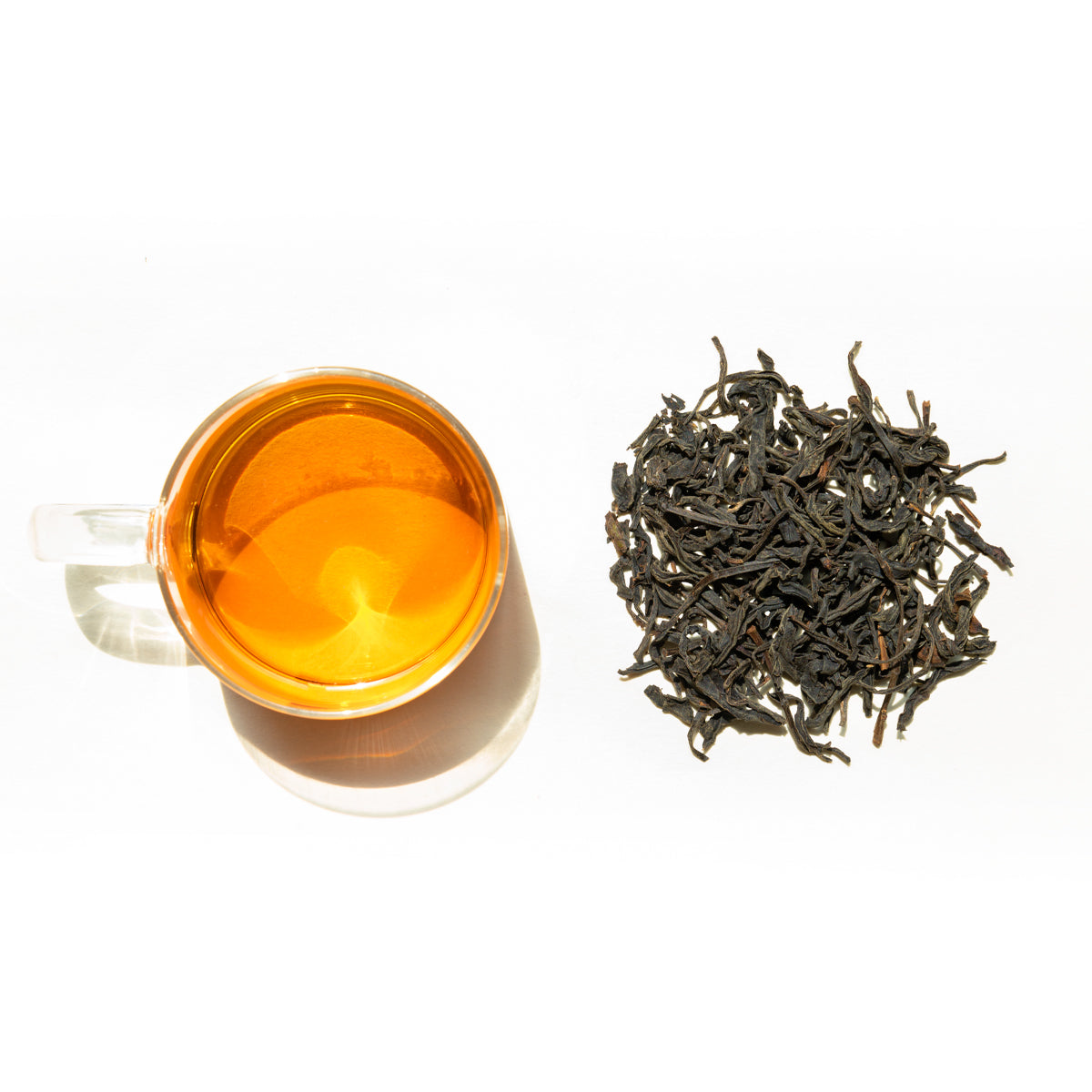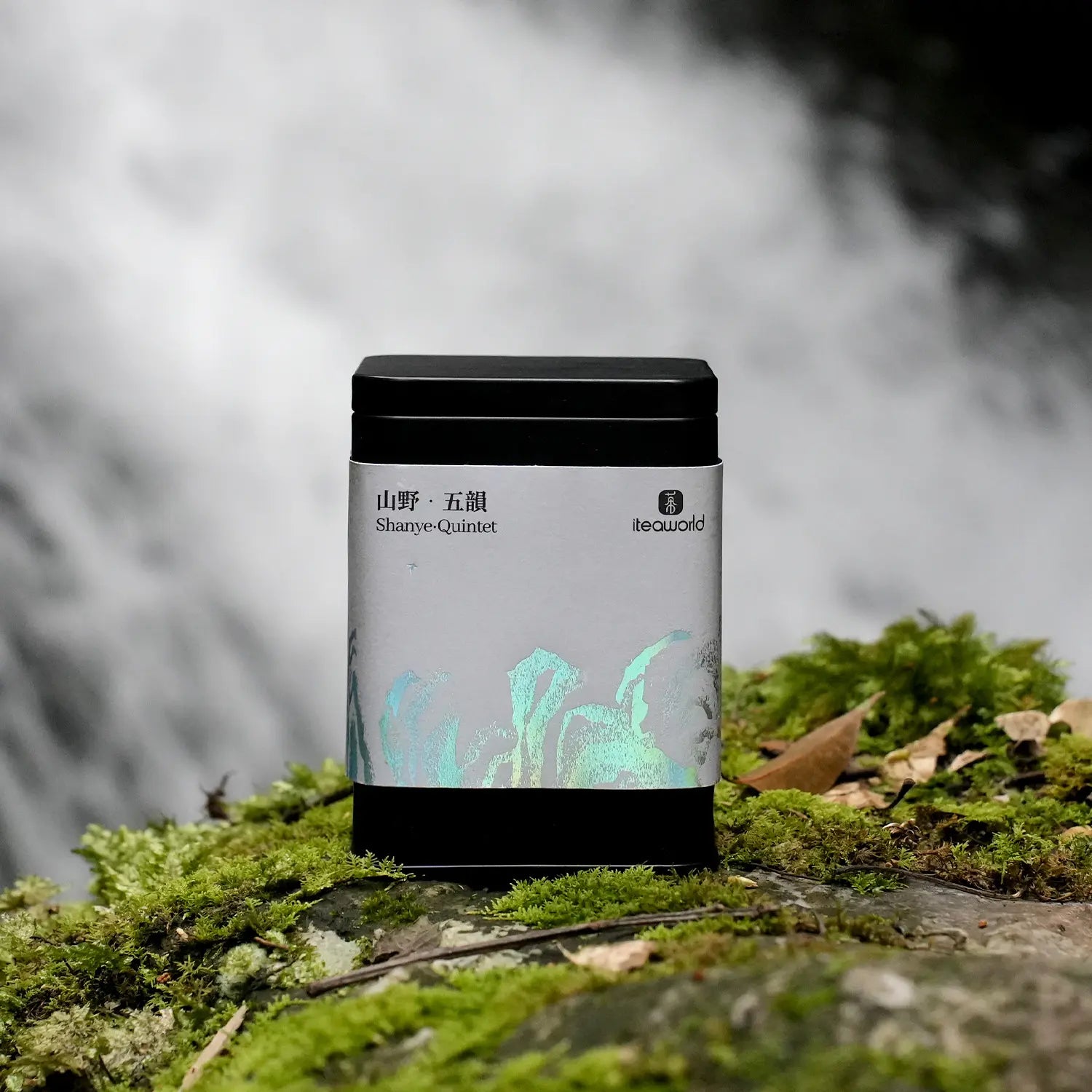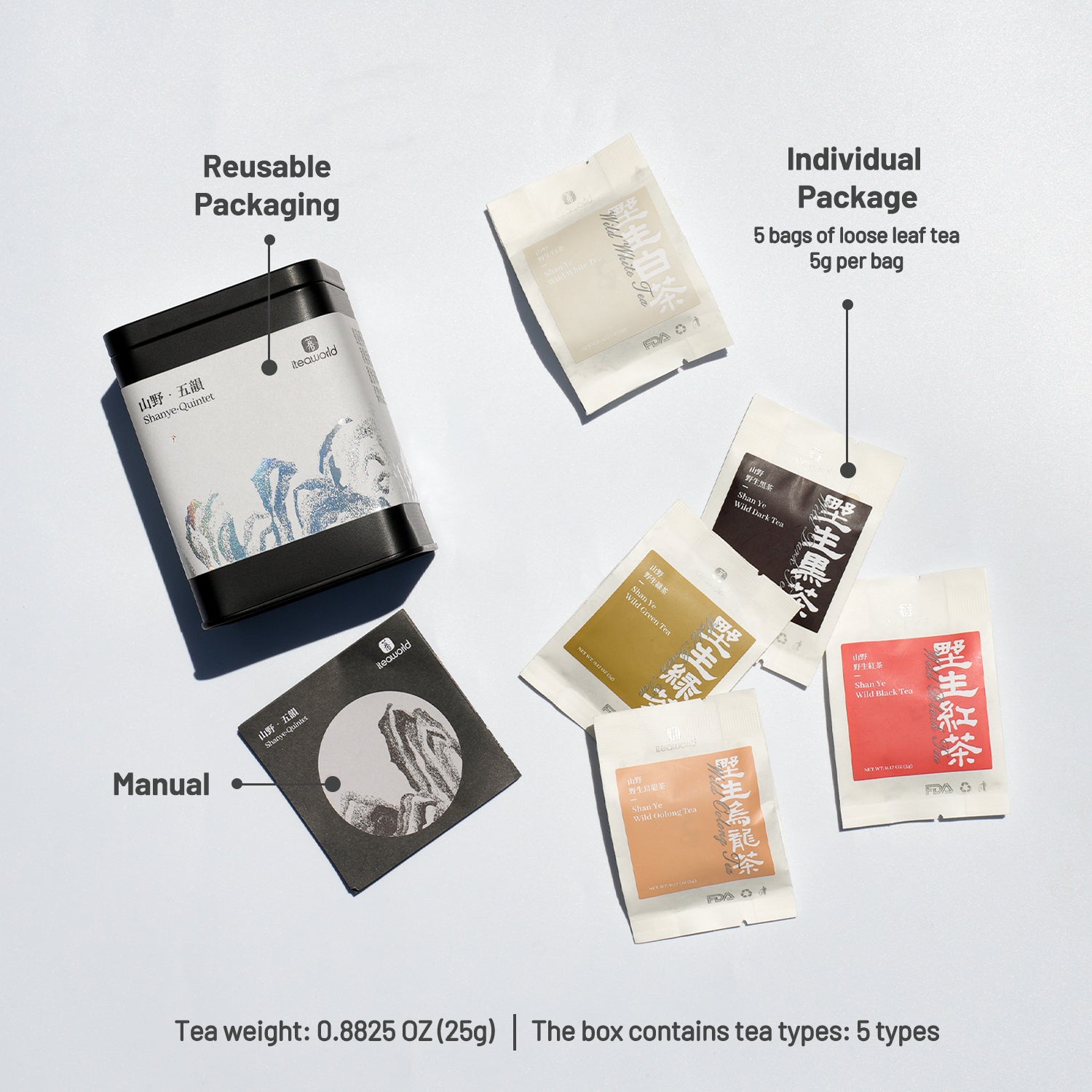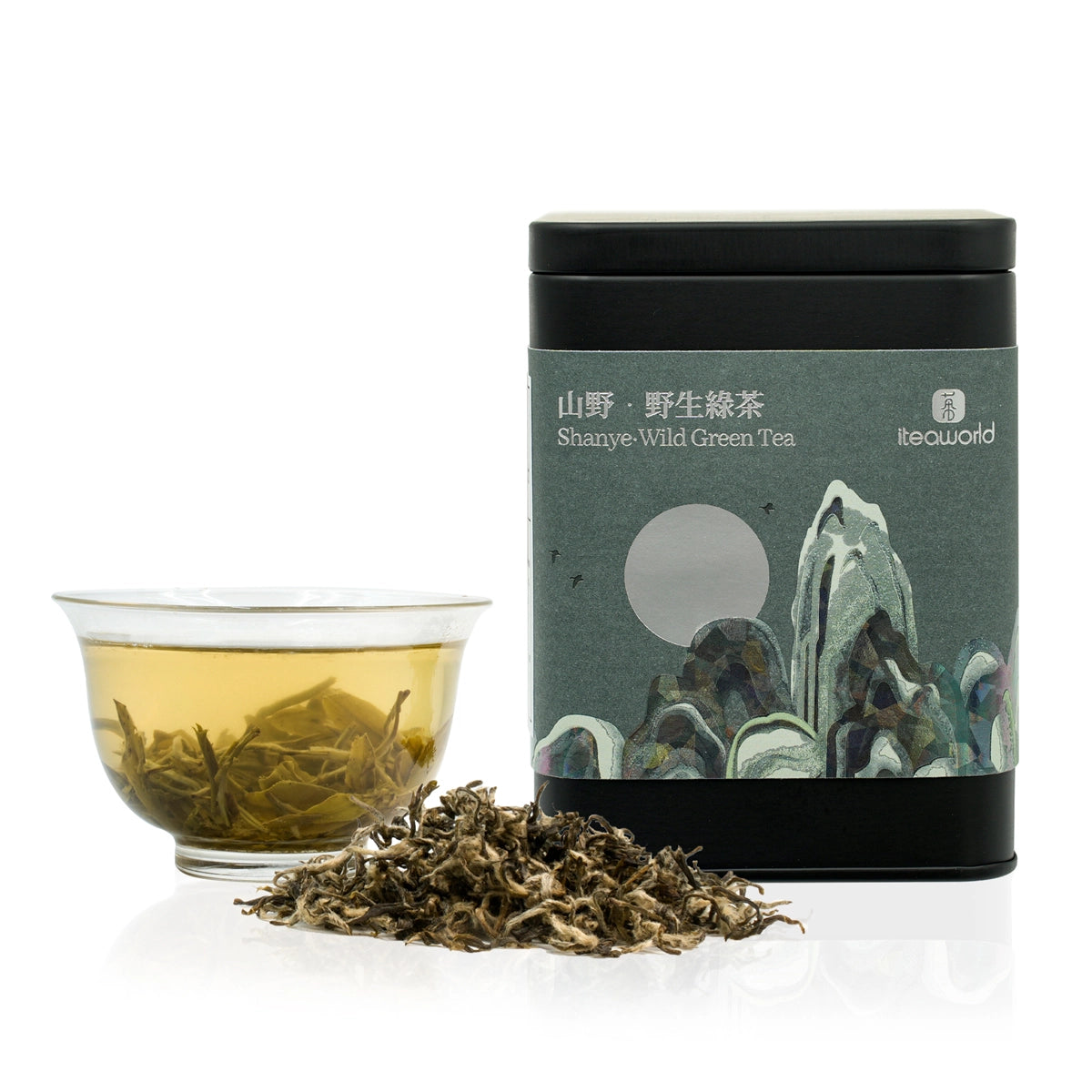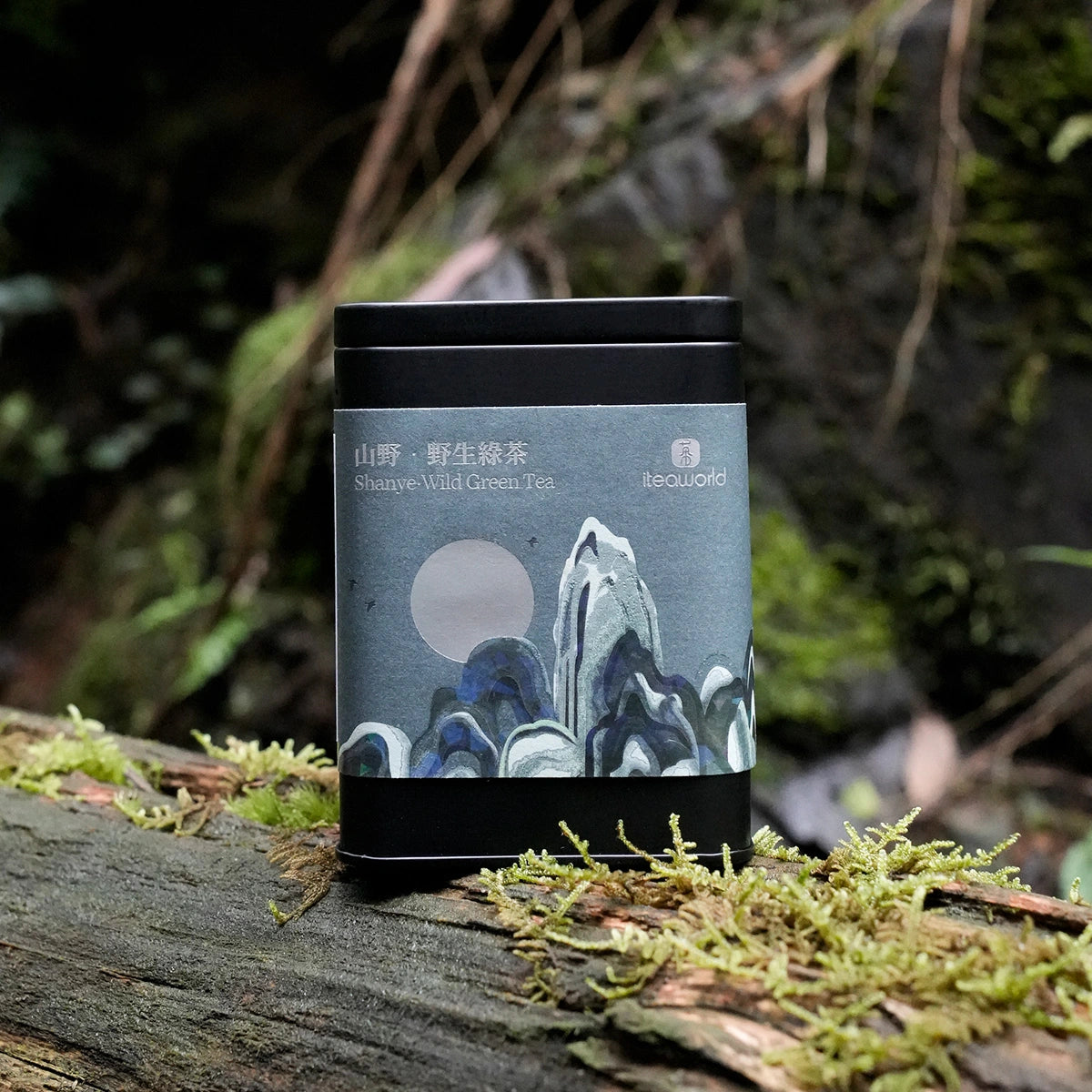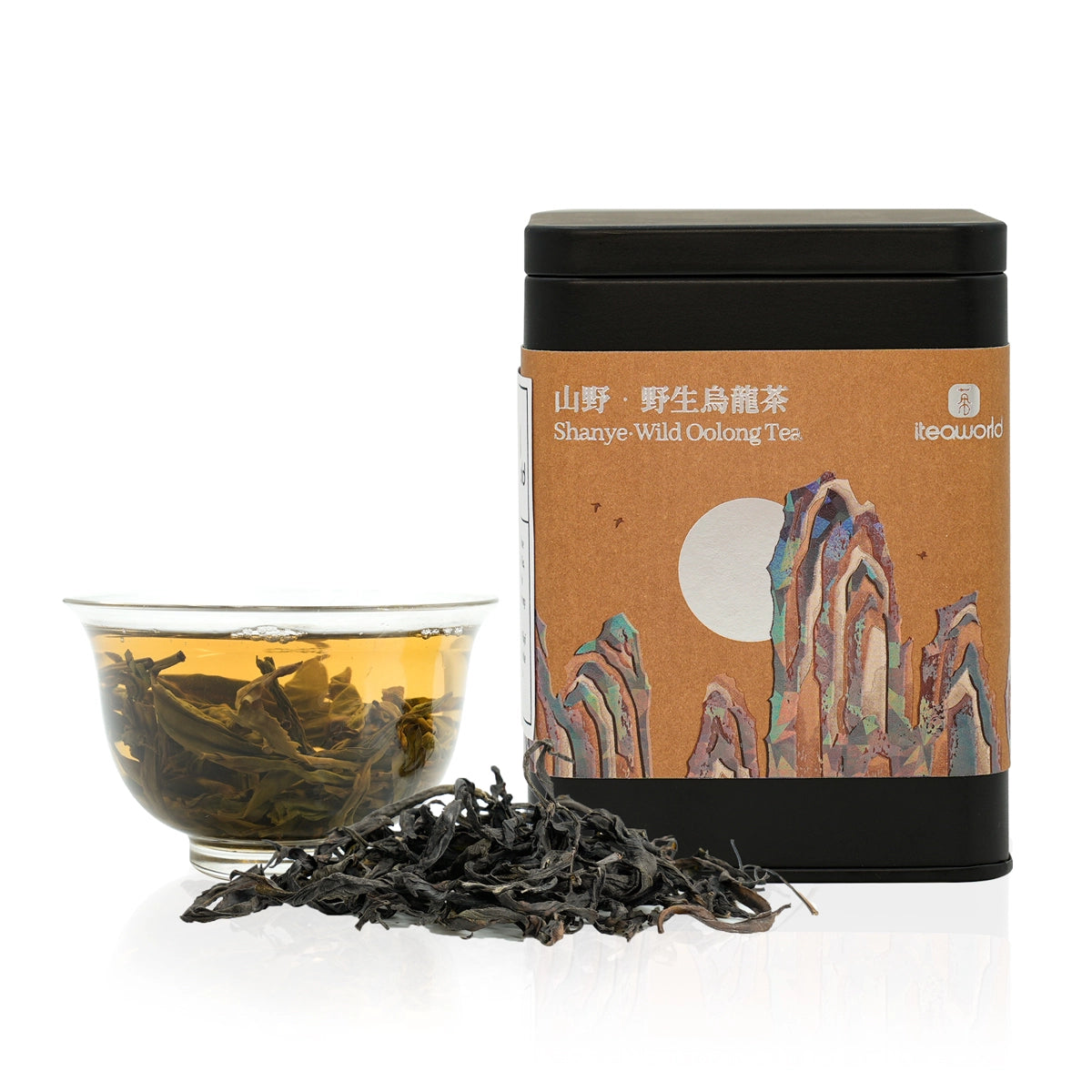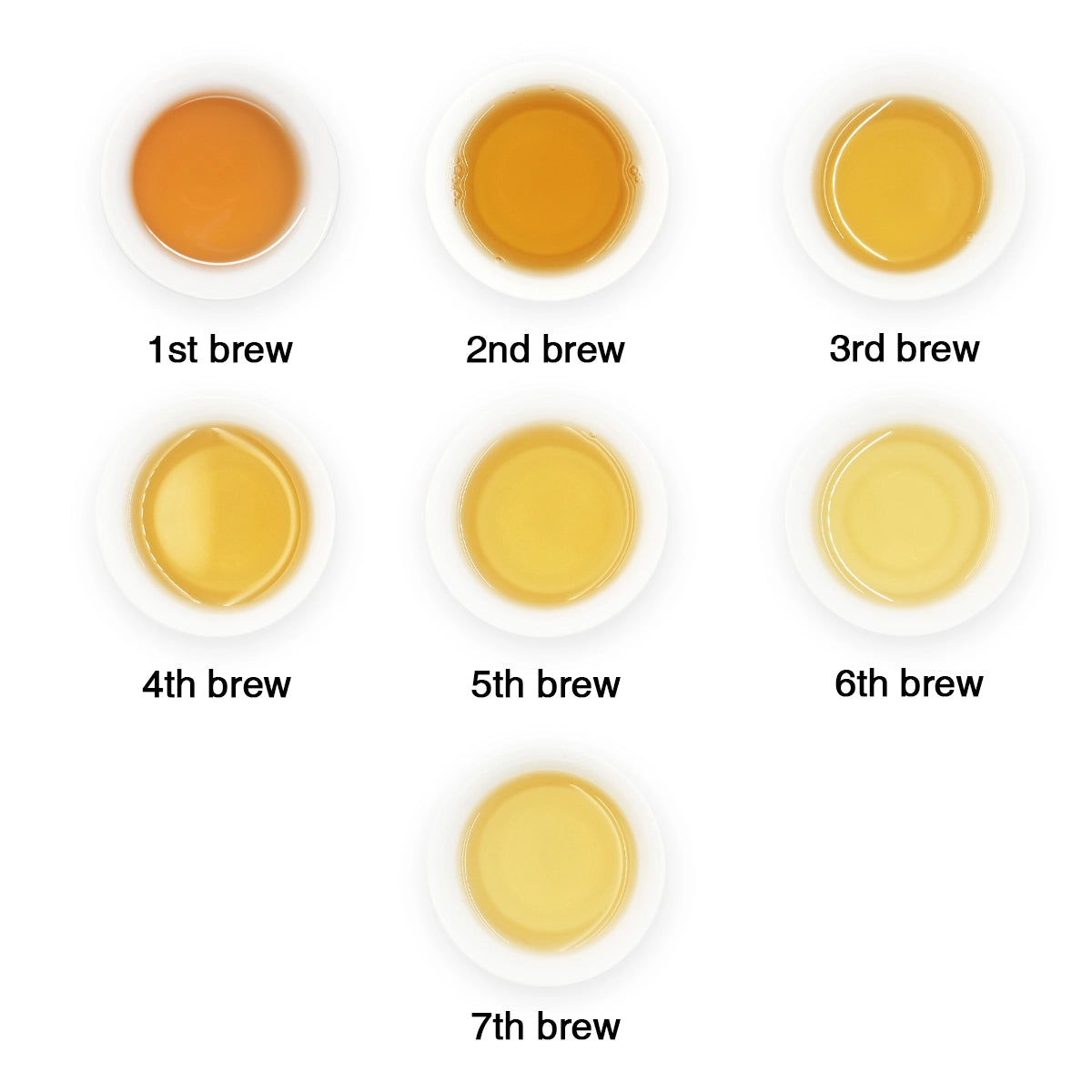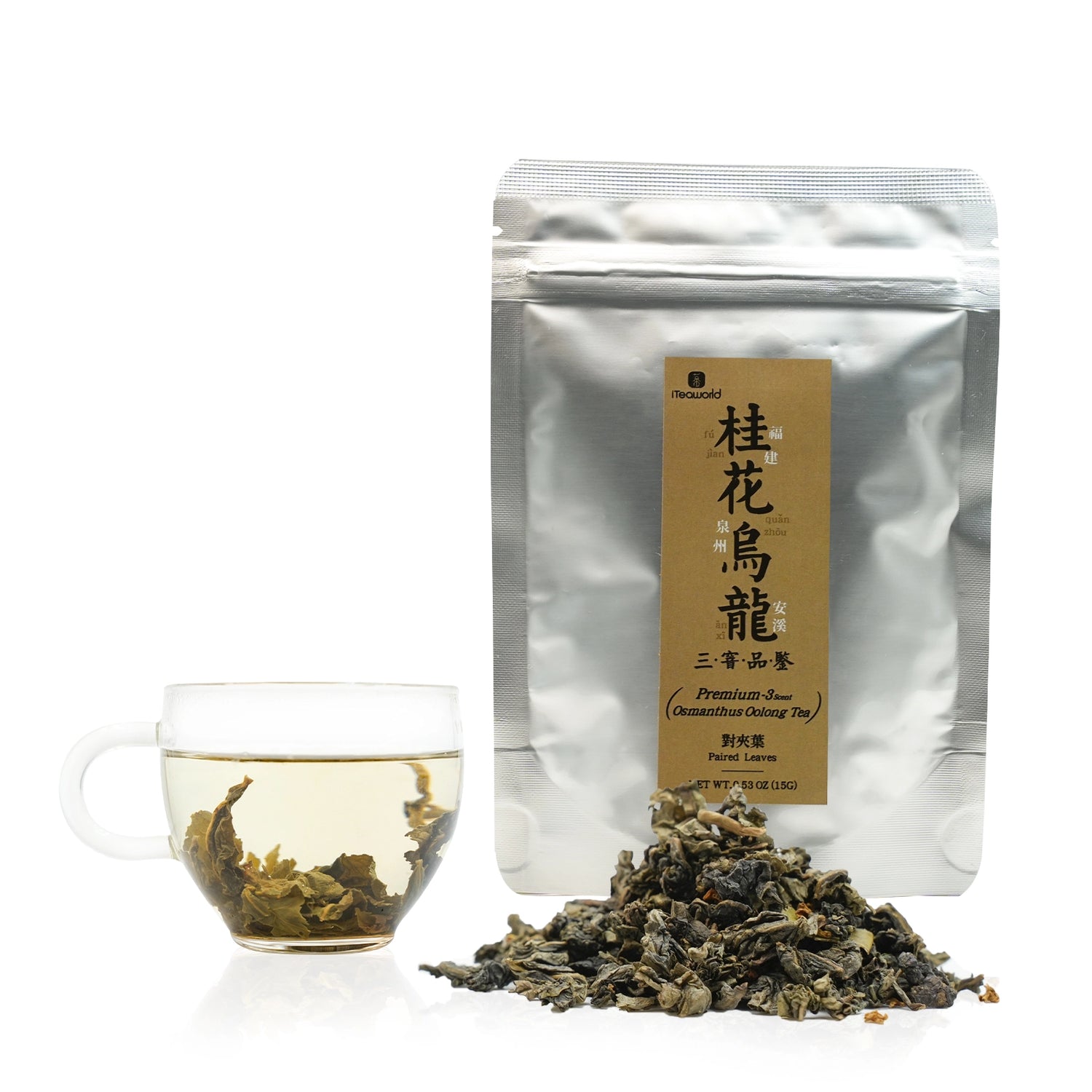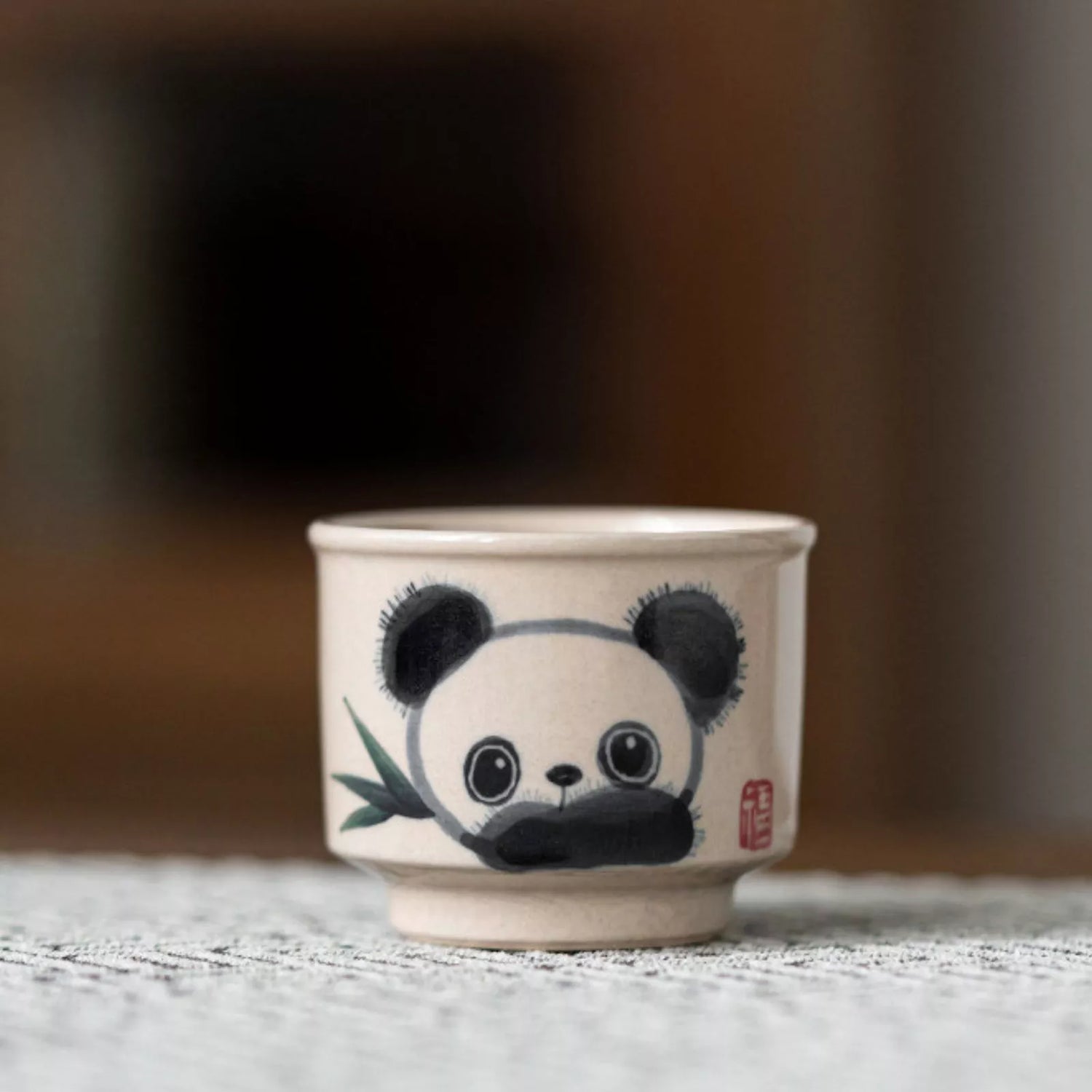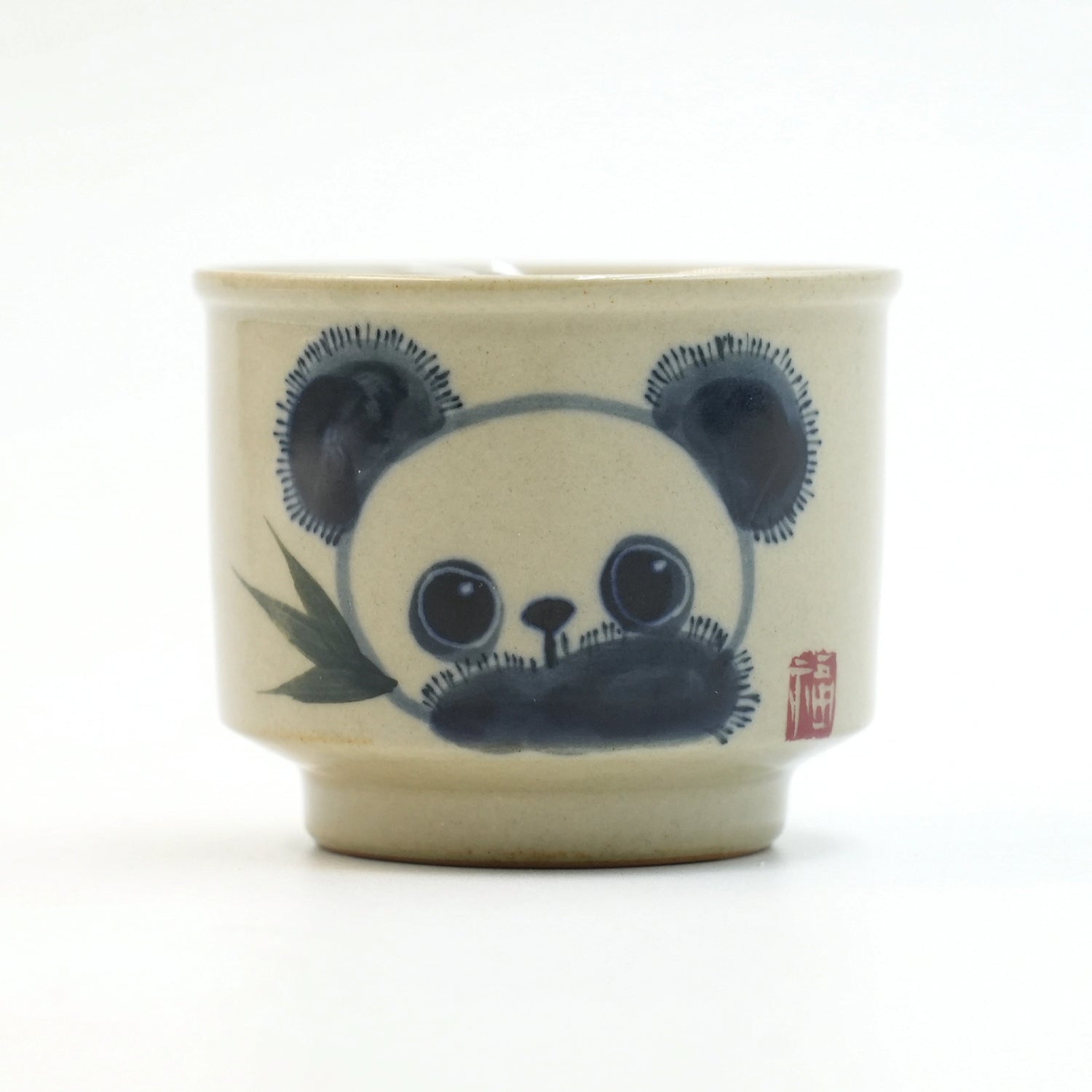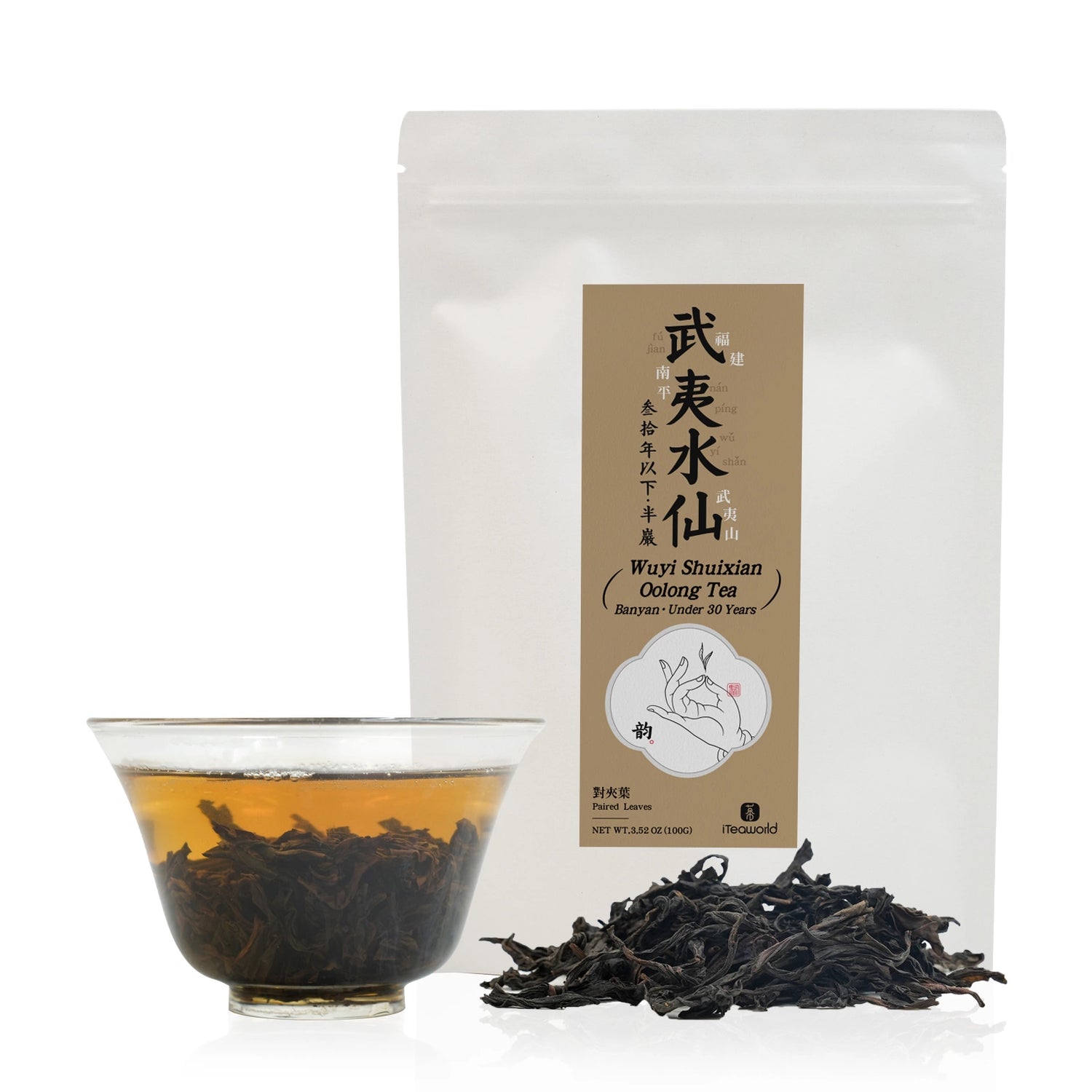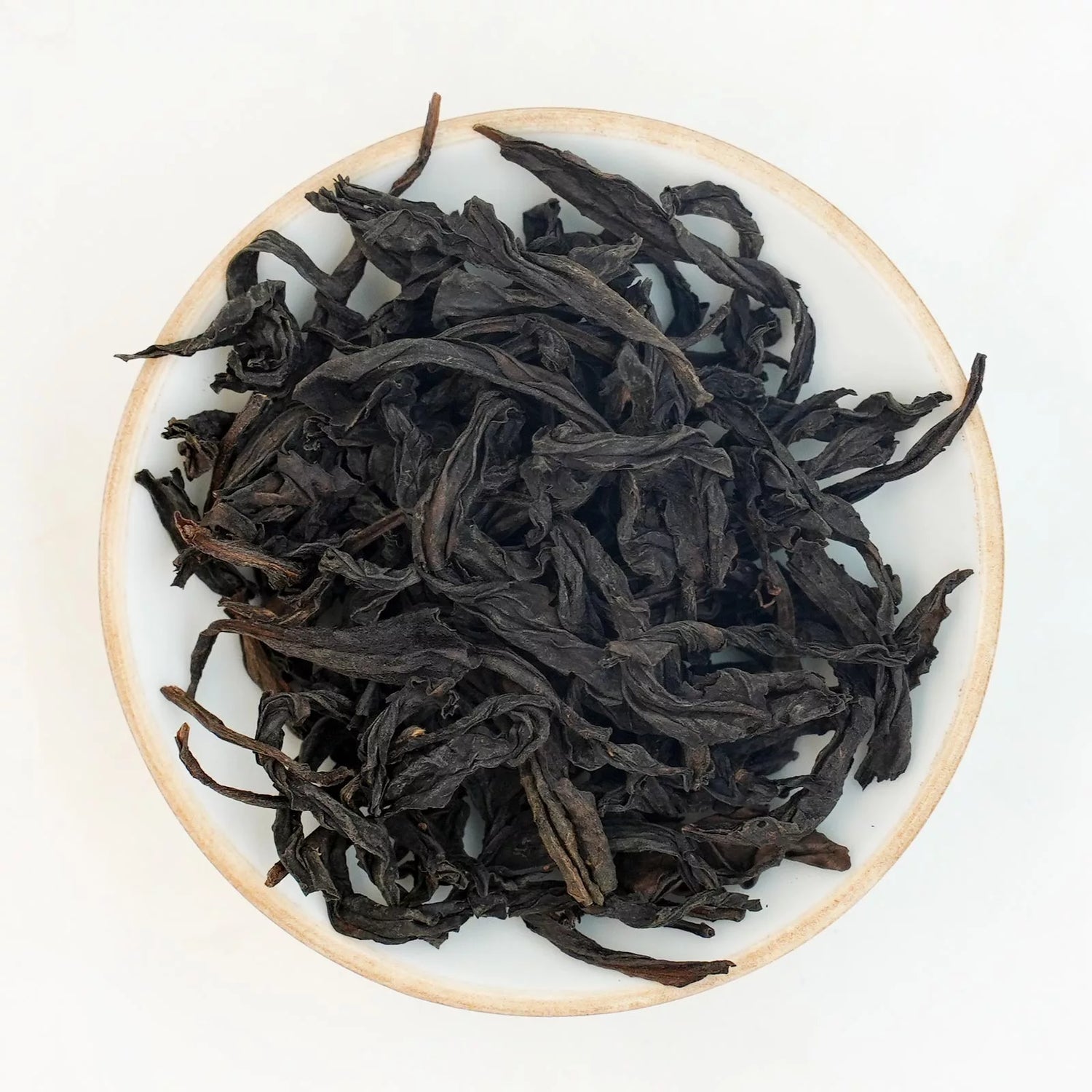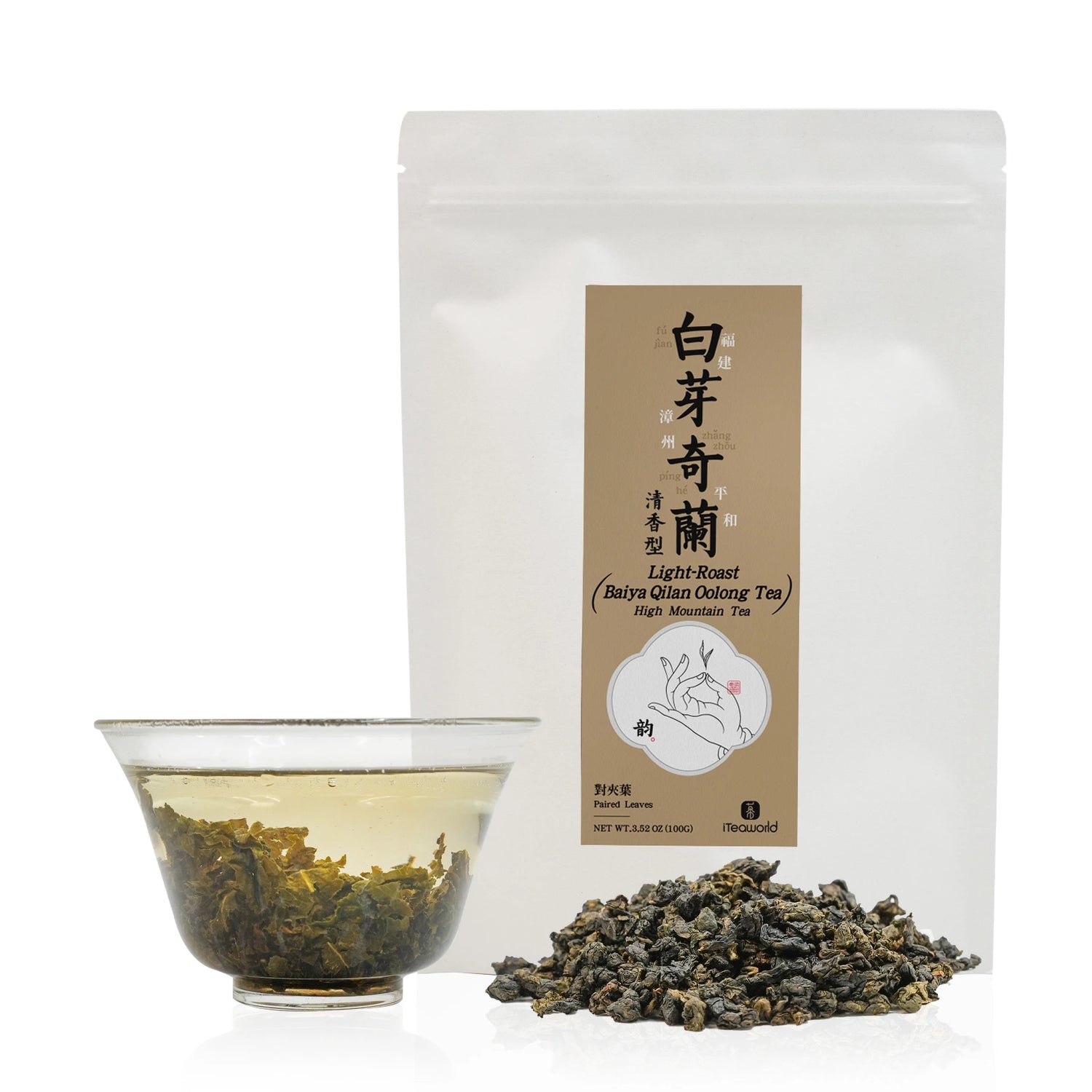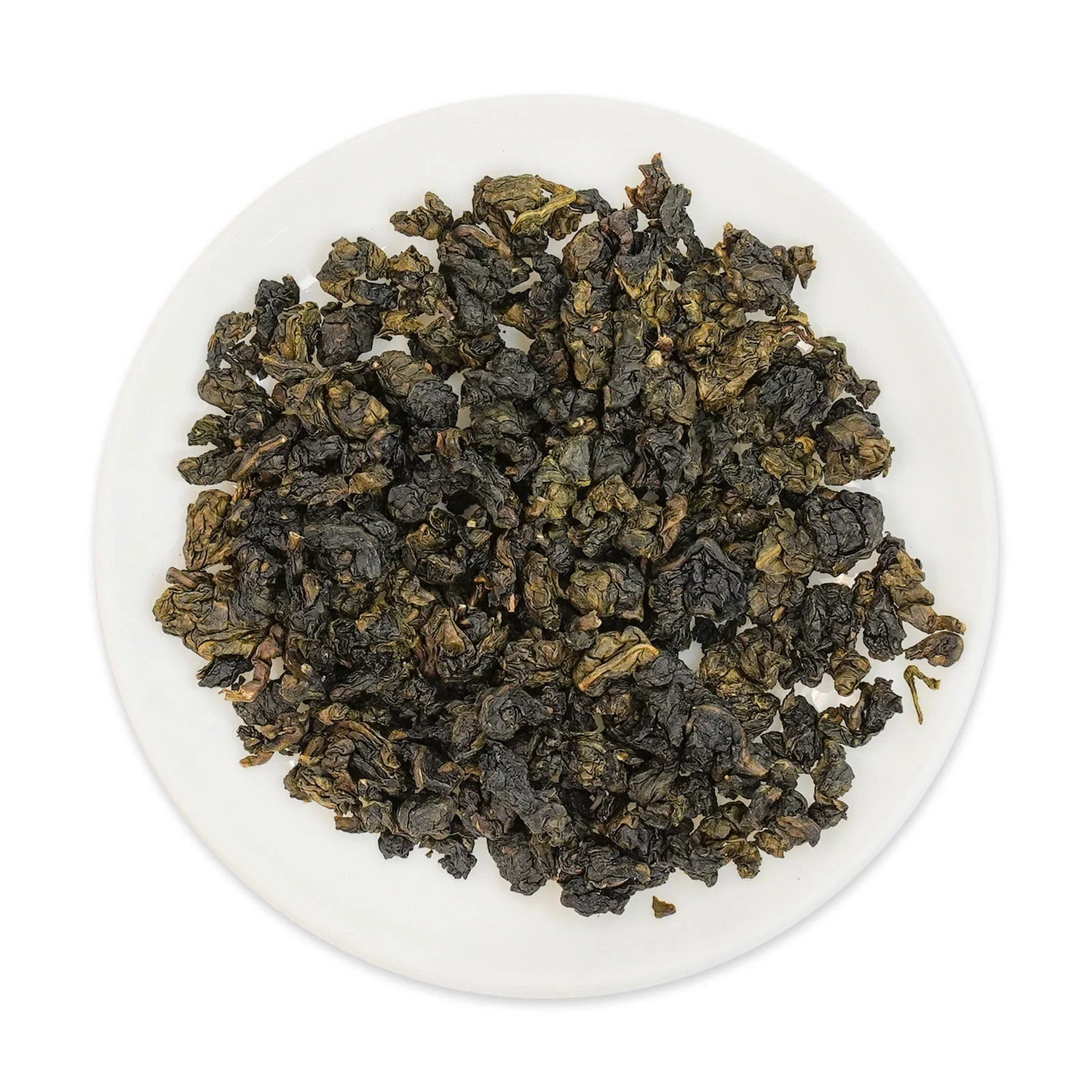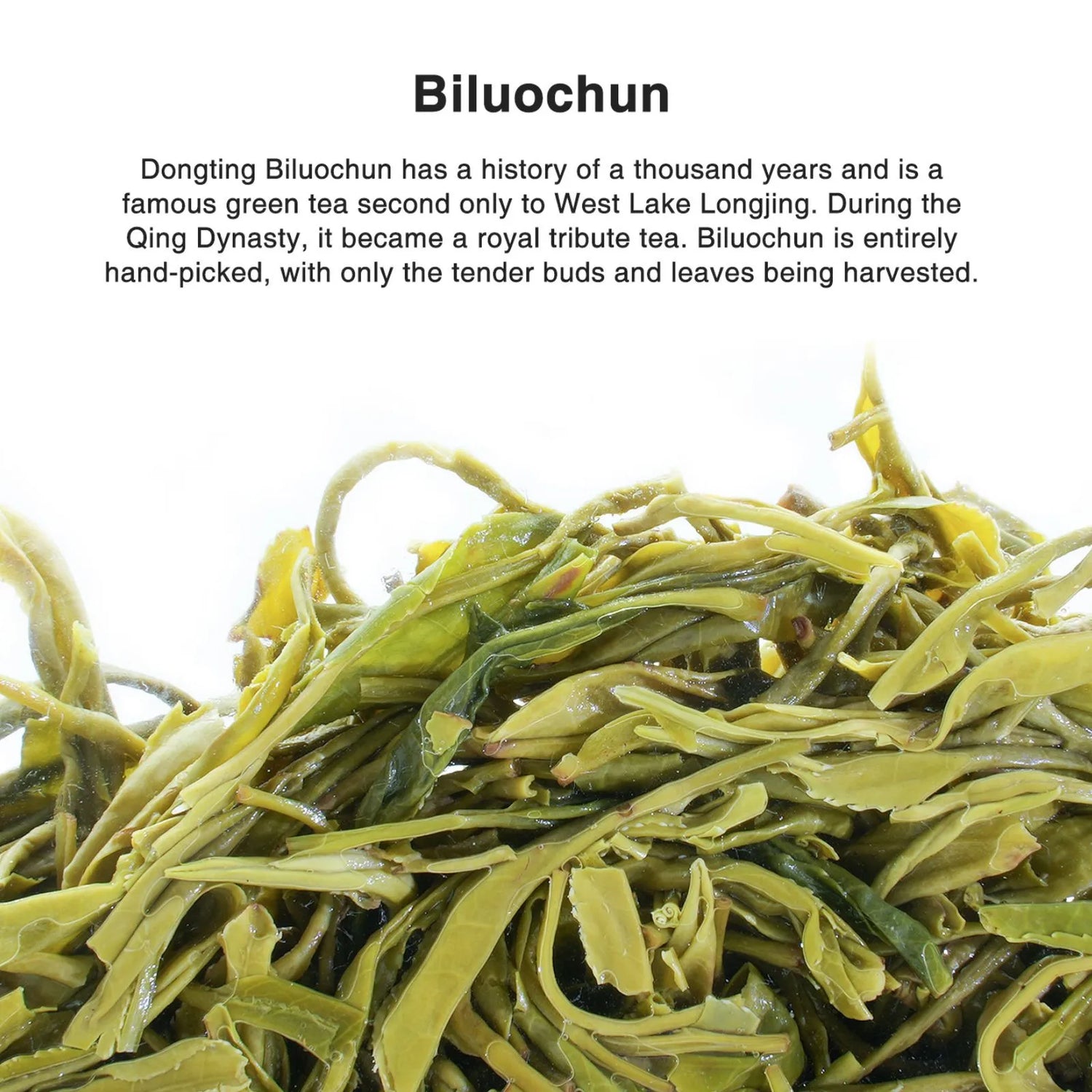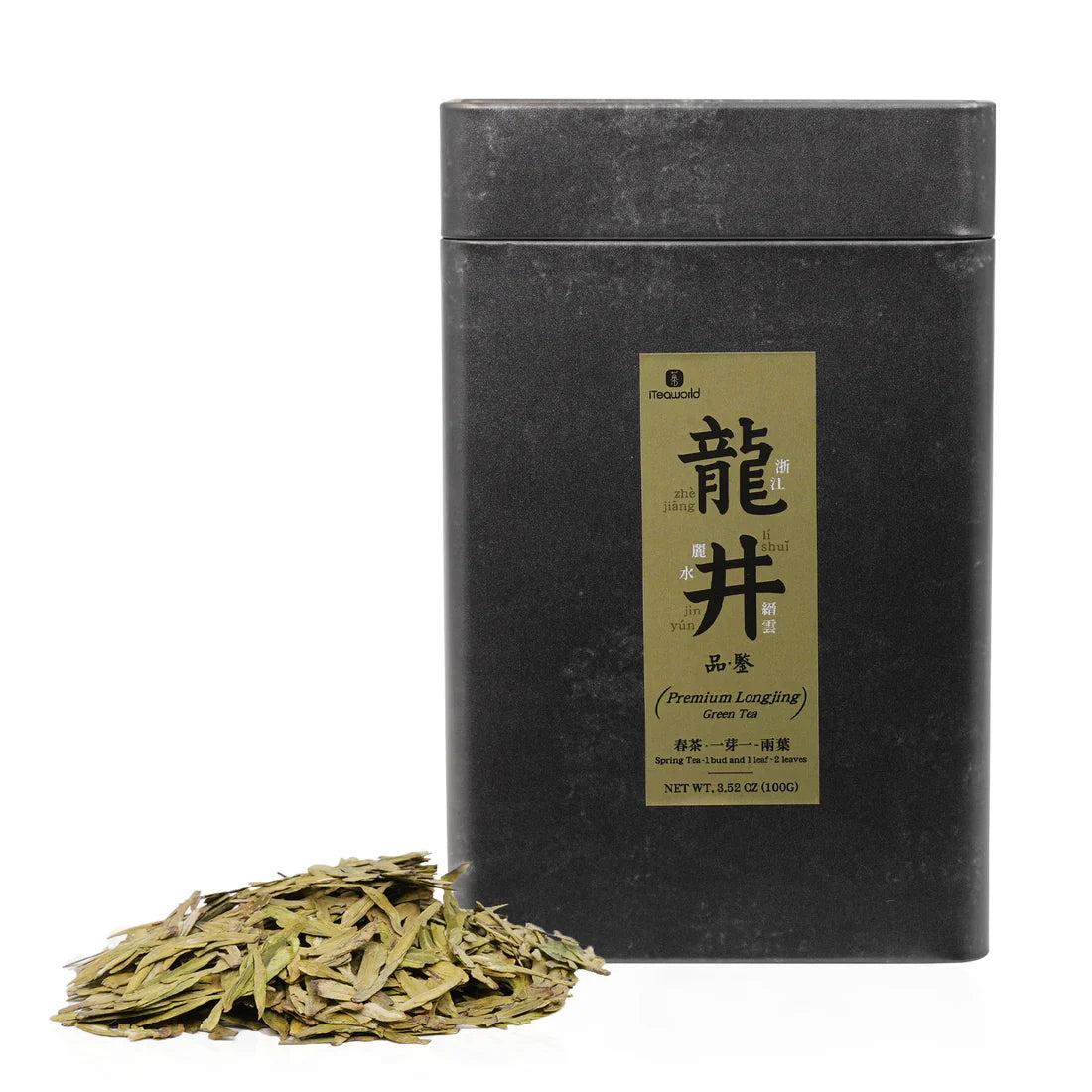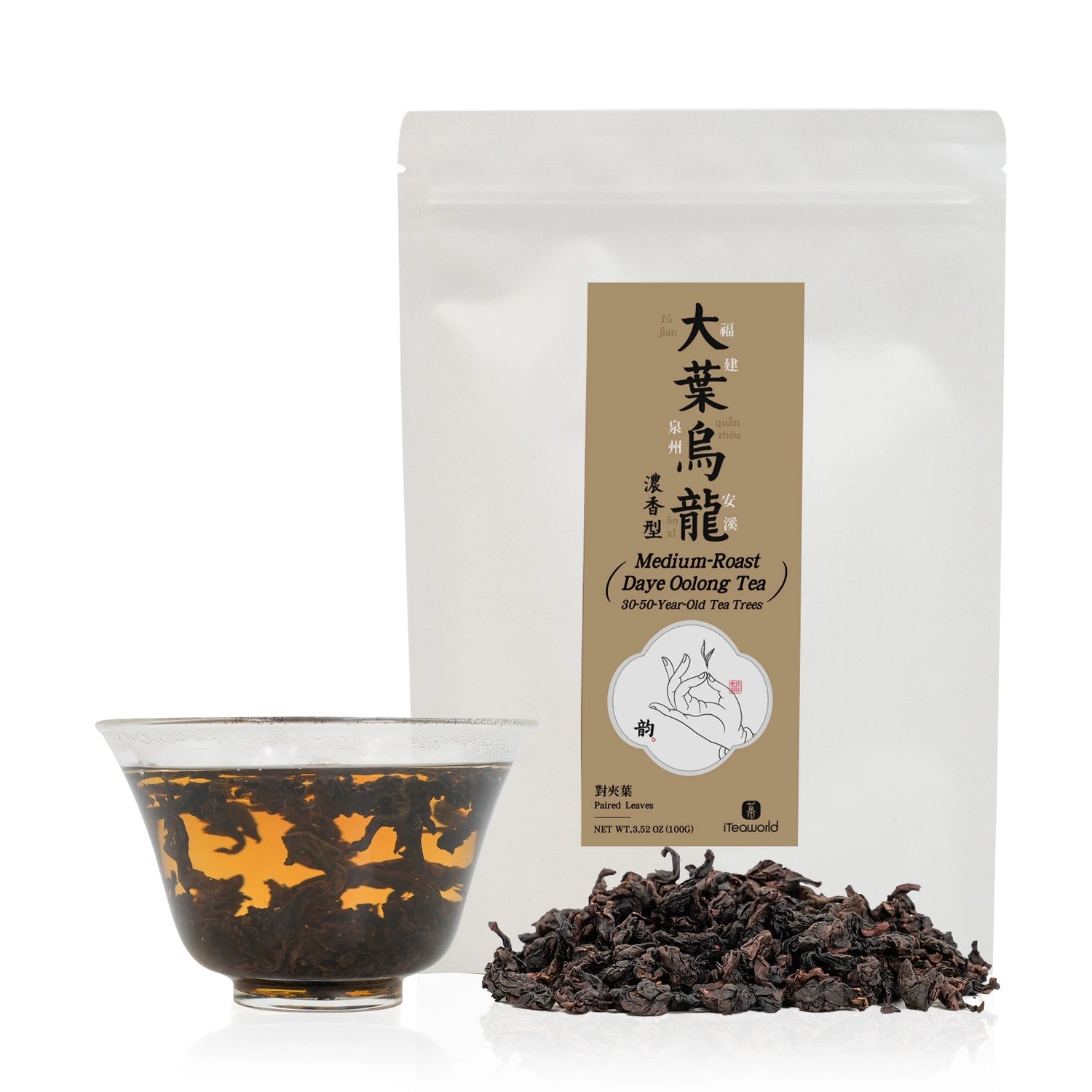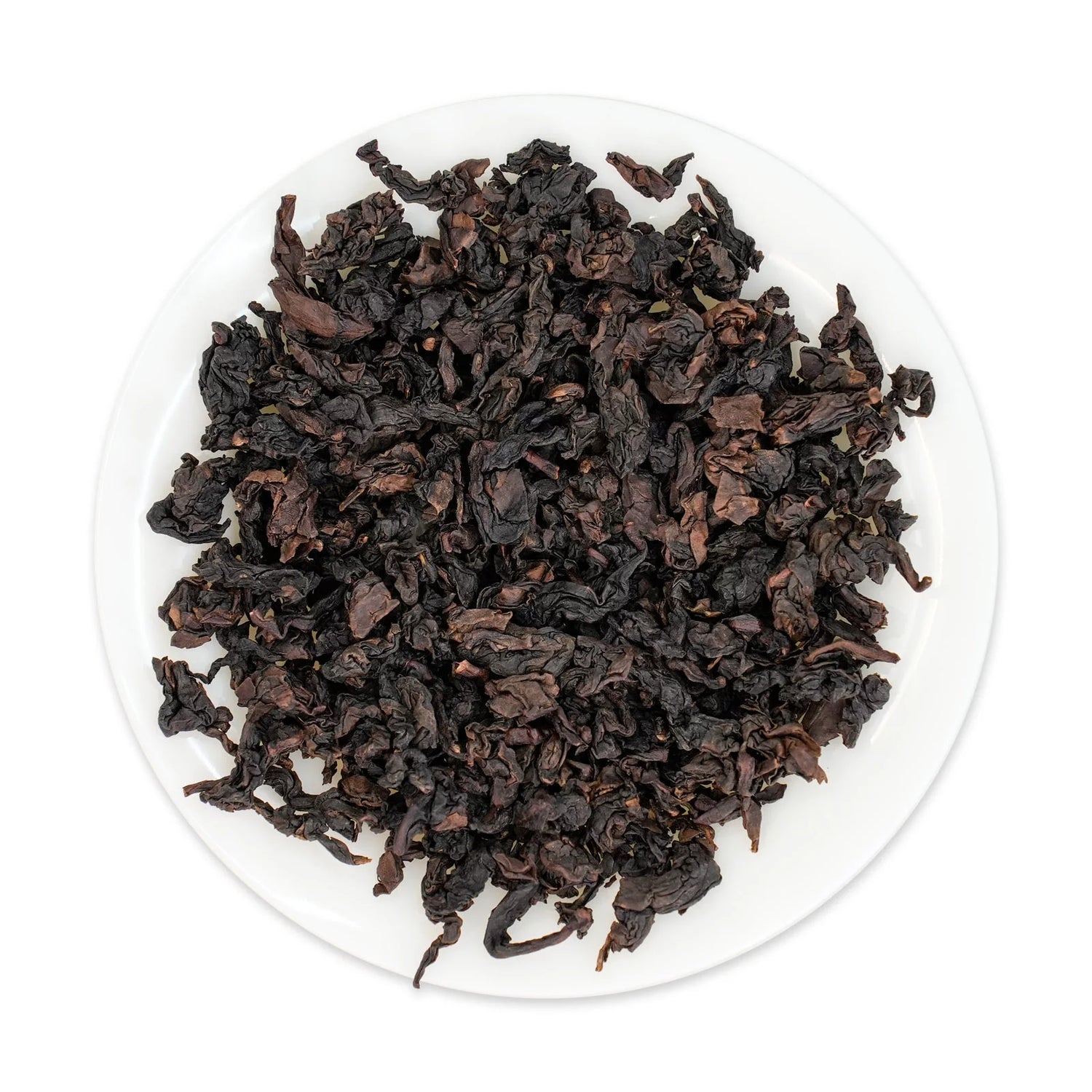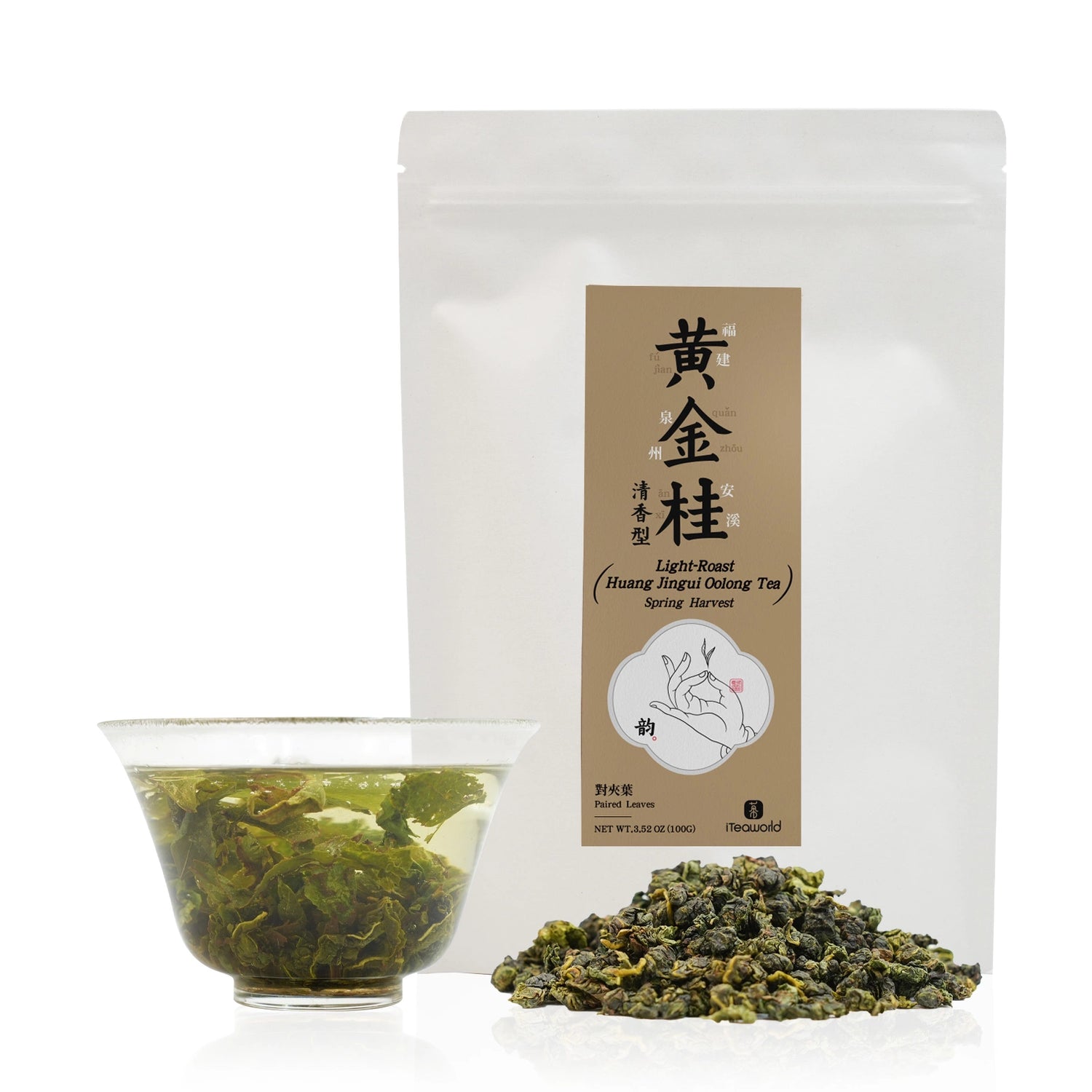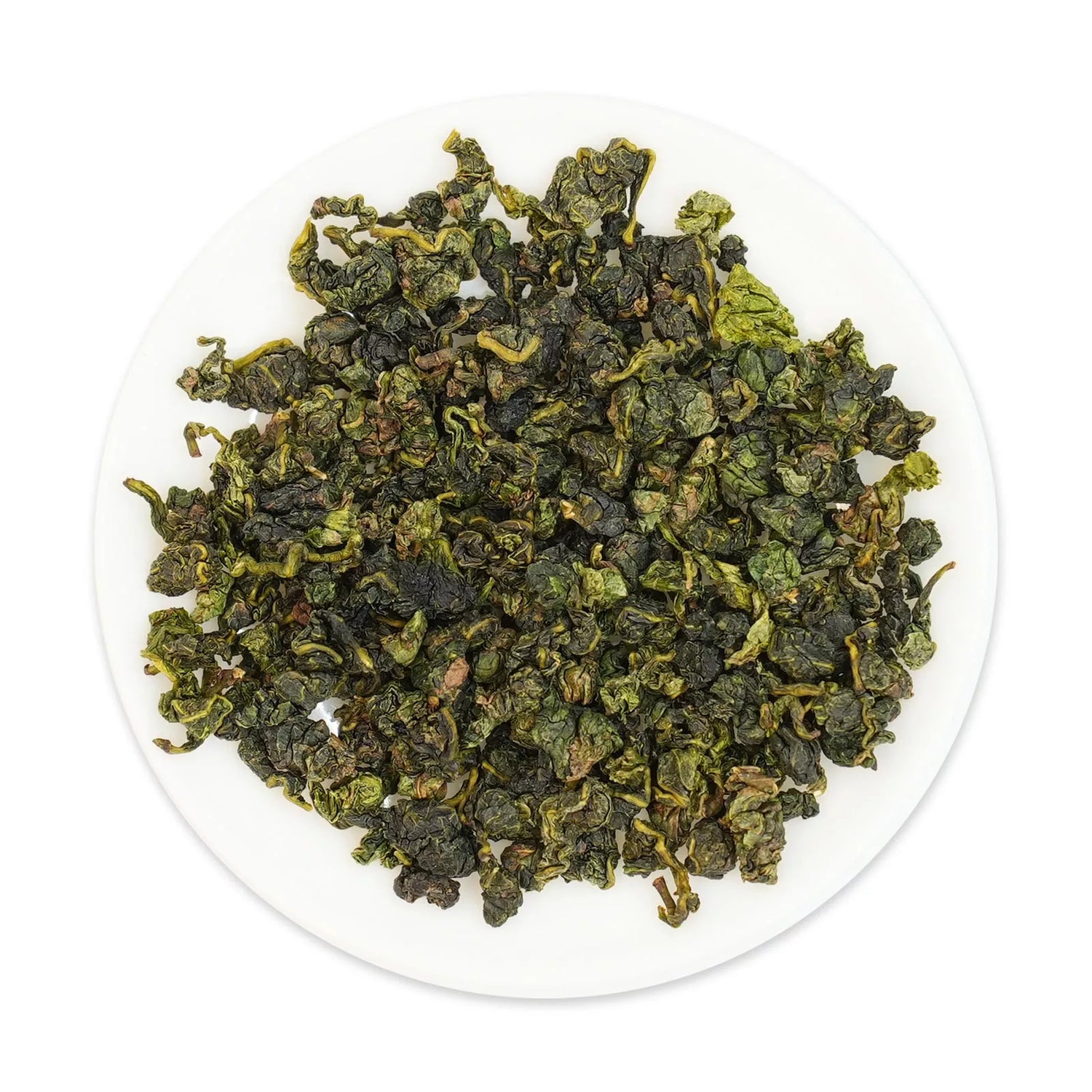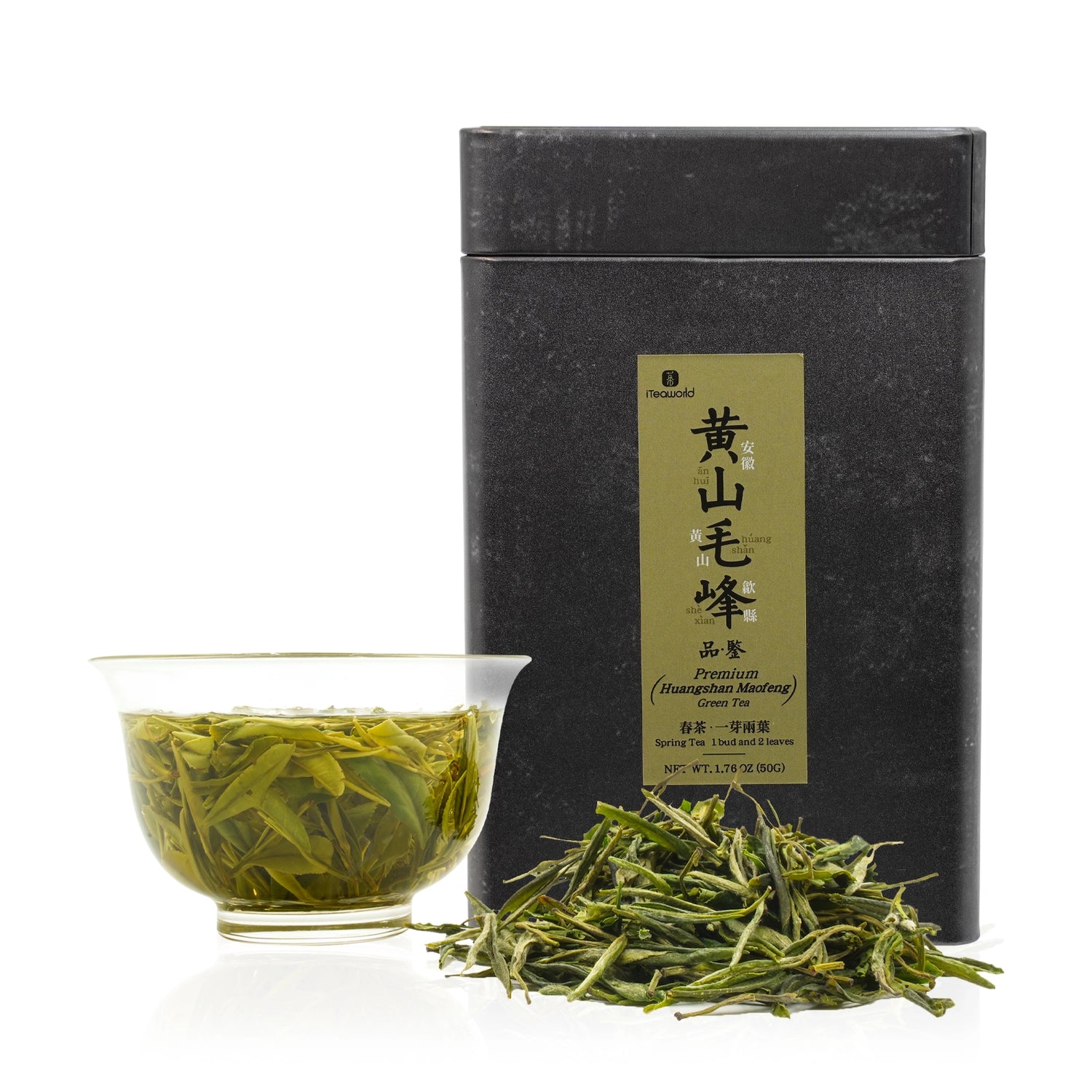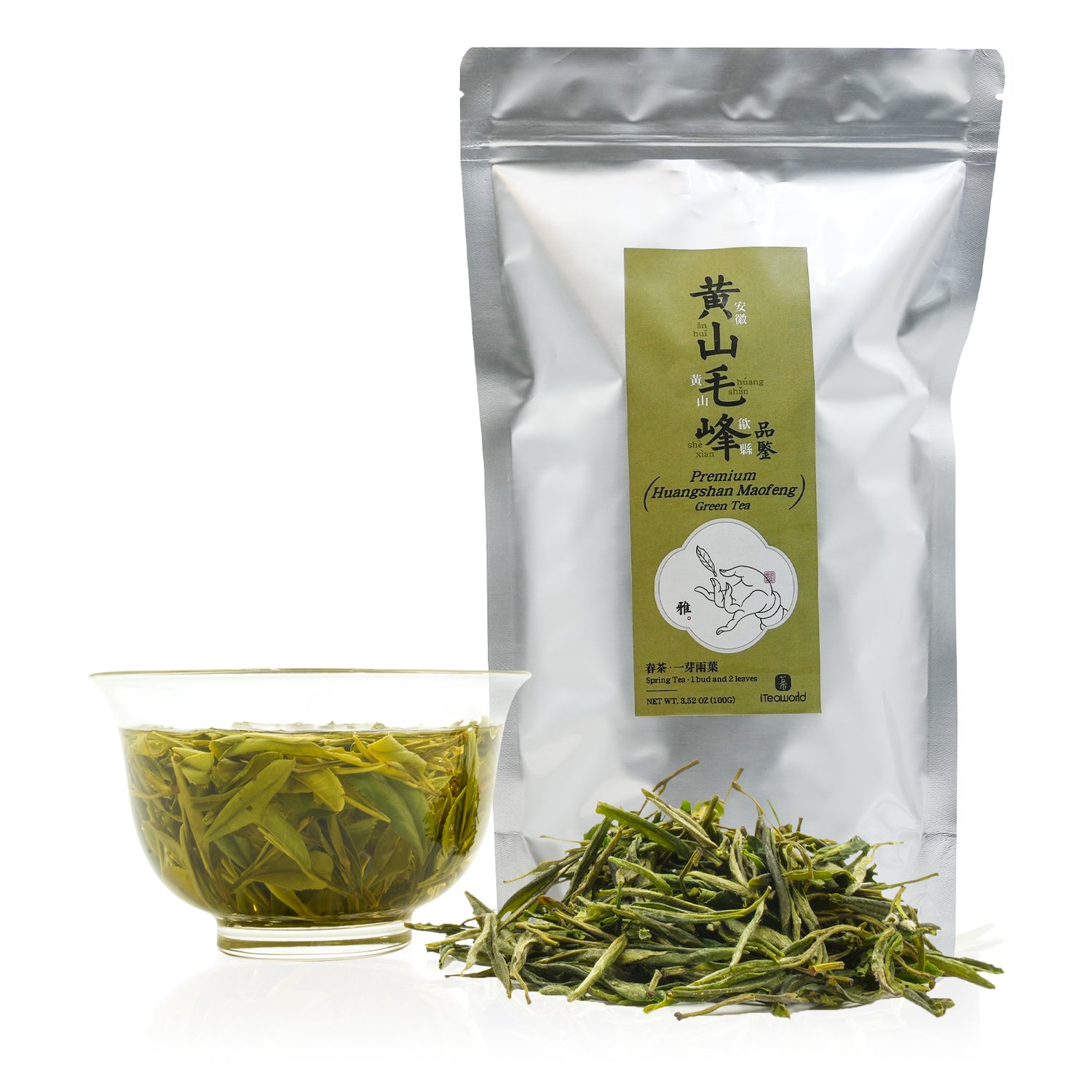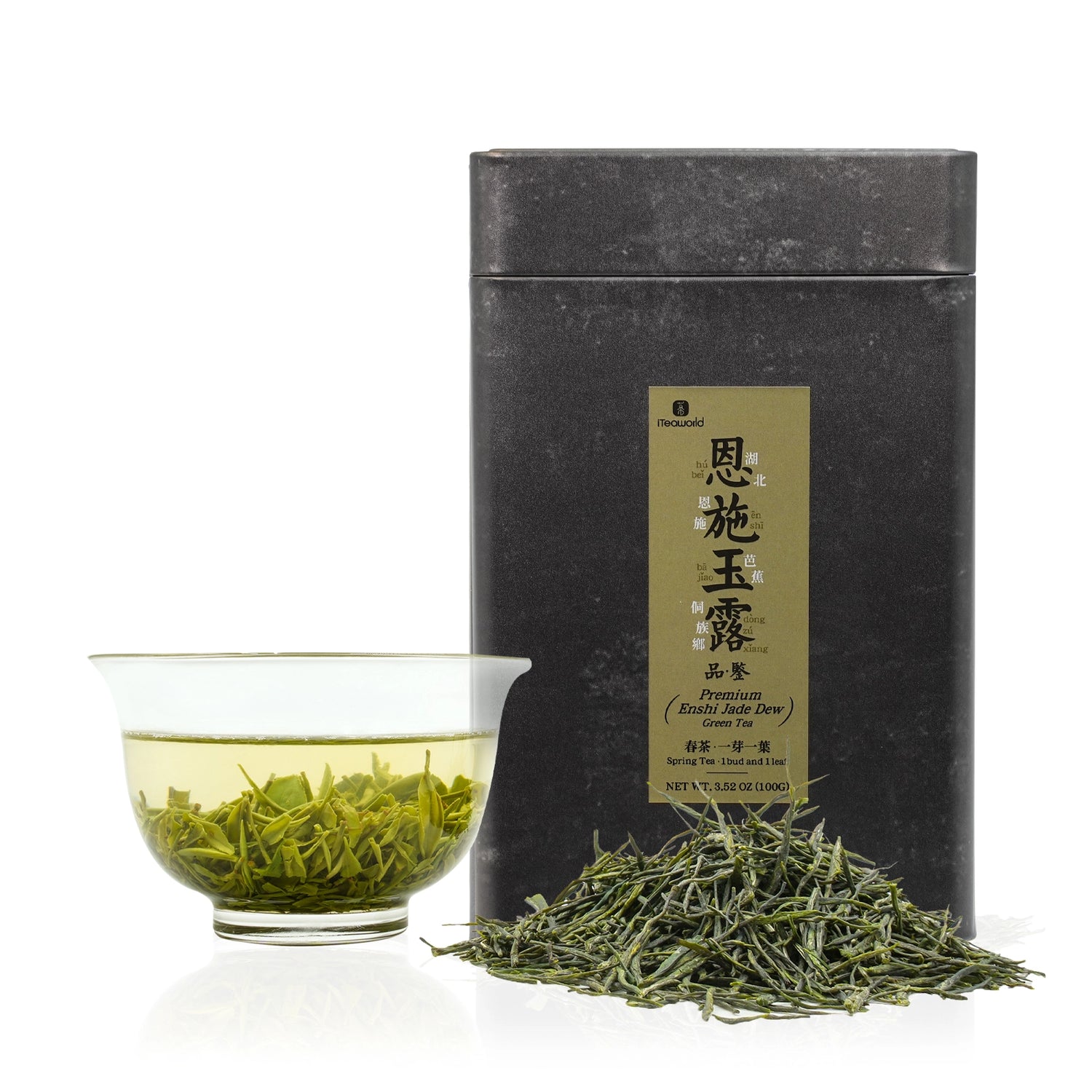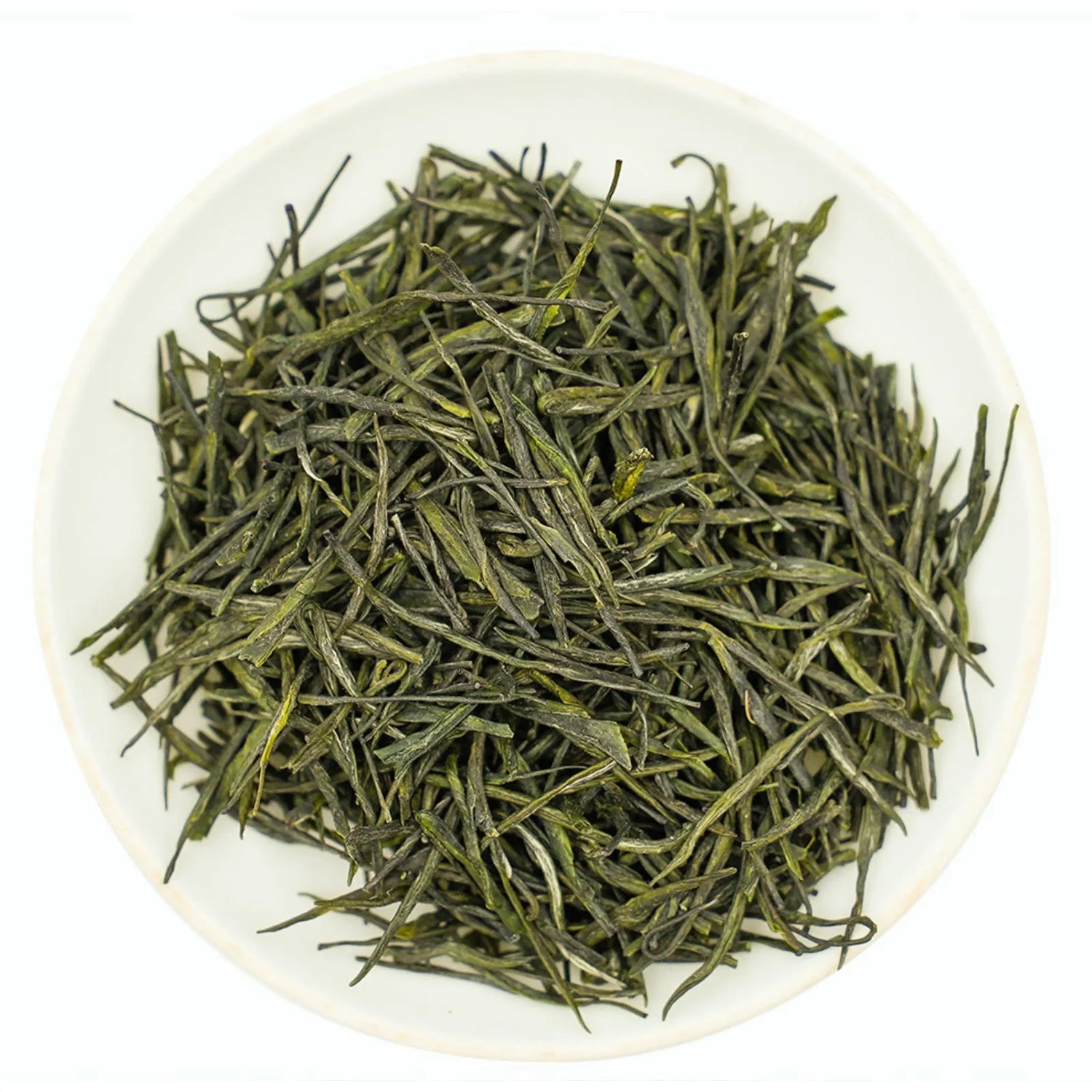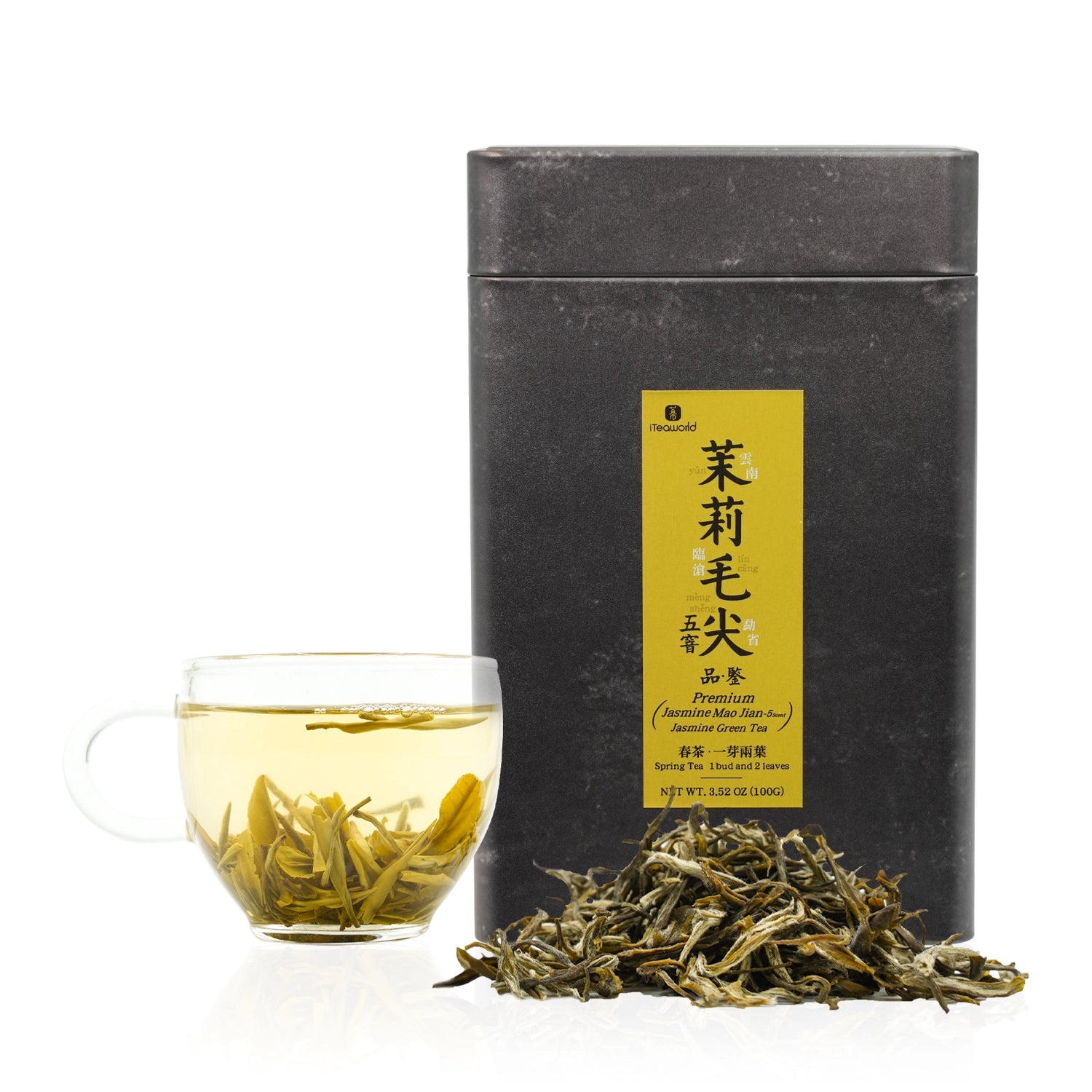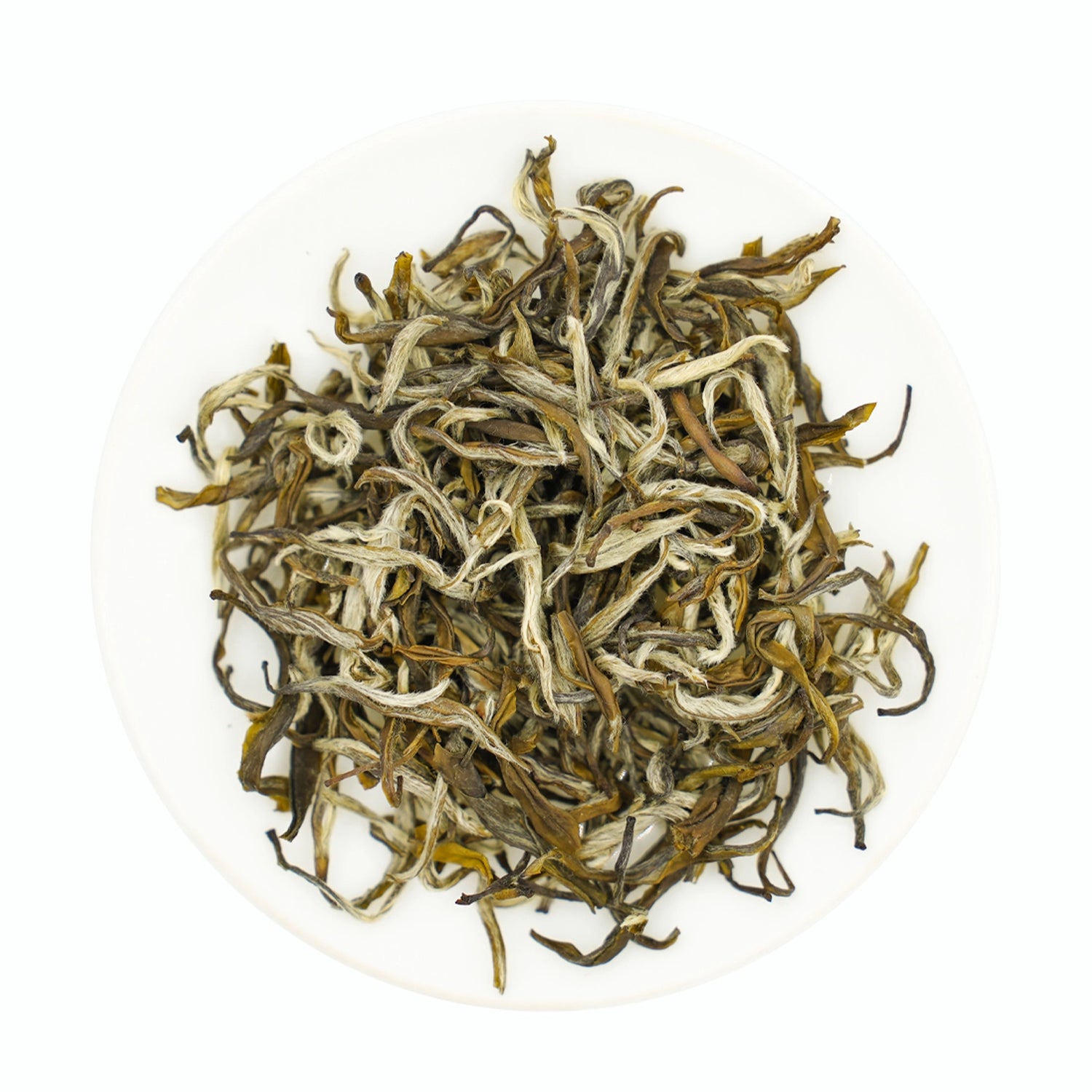Sort by:
177 products
177 products
The Oolong Tea Sampler comprises four renowned loose-leaf Oolong teas from China: Tie Guan Yin, Minnan Narcissus, Da Hong Pao, and Feng Huang Dan Cong. It provides a comprehensive opportunity to appreciate the disparities among Oolong teas, from their refreshing, floral, honeyed, to fruity aromas. Moreover, you'll delve into the variations in taste brought about by differences in fermentation levels and roasting intensities. Additionally, you'll explore the unique flavors derived from both modern high-mountain tea gardens and ancient tree plantations. This sampler simplifies the process of identifying your preferred Oolong tea variety.
Net weight: 80g total, 5g per pack. More tea, same price.
Each pack is perfect for both Gongfu-style and Western-style brewing—just the right amount for one brew.
The best oolong tea collection for beginners — featuring 10 of the most iconic and popular Chinese oolong teas, with 2 mini tea cakes of each variety (20 pieces total).
Each tea is crafted from carefully selected loose leaves and pressed into convenient 5g mini cakes — just drop into hot water, no teaware needed.
This curated set showcases a broad spectrum of natural oolong flavors, from the fresh floral notes of Tie Guan Yin to the deep roasted richness of Da Hong Pao.
Absolutely no added sugar, artificial flavors, or colors — just 100% natural tea.
It’s the perfect way to explore authentic Chinese oolong tea and discover your personal favorites — a low-risk, high-value journey into real tea without the overwhelm.
Please note: Because the mini cakes are made from full loose leaves that are softened and compressed, some small leaf fragments may appear when steeped—this is completely normal and part of the natural tea experience.
Wild red tea, produced in the Damingshan area of Shanglin County, Nanning, Guangxi. The tea gardens are primarily located at an altitude of 900 meters.Wild red tea grows in a pristine ecological environment with abundant vegetation. Due to the absence of chemical fertilizers and pesticides, its yield is limited, with only one spring tea harvest per year. It is processed using the traditional Lapsang Souchong Tea Process (non-smoked). It boasts a rich and unique floral aroma, with a sweet and refreshing taste, bright orange-yellow liquor, and evident golden rings.
Wild Souchong Black Tea uses wild tea leaves from mountains in Guangxi Province. It uses a special tea-making method of traditional Lapsang Souchong technique. Wild Souchong Black Tea maintains the taste of Lapsang Souchong, while it has a richer flavor. Lapsang Souchong is the earliest black tea and it is called black tea originator. It has a history of 400 years. Lapsang Souchong is baked by pine needles or pine wood. As a result, it has very strong fragrance. Also, due to the bake technique, the color of the tea is grey black and the color of tea soup is dark amber.
Wild green tea, produced in Kaishan Town, Hezhou City, Guangxi. The tea area is situated at an altitude of around 1000 meters, surrounded by mountains on three sides, with mist shrouding the area year-round. Grown in a pristine ecological environment with abundant vegetation, this wild green tea is cultivated without the use of chemical fertilizers and pesticides, resulting in limited yield with only one spring harvest per year. Processed using the techniques of Roasted Green Tea, it offers a rich and refreshing taste, initially slightly bitter but quickly turning sweet, with a fragrant and full-bodied aroma. The taste is complex and layered, with a unique apple fragrance and a lingering aftertaste. Even after multiple infusions, the aroma remains fresh and pleasant. The liquor is clear and bright, with a yellow-green hue, visually appealing.
Wild oolong tea, produced in Li Jiang Village, Longsheng County, Guilin, Guangxi. Surrounded by mountains on all sides, the region boasts rich organic soil, strong sunlight, and frequent rainfall, at an altitude of around 1000 meters. Grown in a pristine ecological environment with abundant vegetation, this wild oolong tea is cultivated without chemical fertilizers or pesticides, resulting in limited yield with only one spring harvest per year. Processed using the techniques of Wuyi rock tea, it offers a rich floral and fruity aroma, with a fragrant infusion and a burst of floral and fruity notes upon tasting. The liquor is bright orange-red, with evident golden rings.
2024 Traditional Osmanthus Oolong
Who It’s For:
If you love teas with a deep, layered profile and long-lasting floral notes, this Osmanthus Oolong is a must-try. Crafted with a base of aged aromatic oolong tea and the fragrant blossoms of century-old osmanthus trees, this tea undergoes a meticulous three-round scenting process. The result? A rich, sweet brew where the floral elegance of osmanthus perfectly complements the tea’s mellow depth. Ideal for tea lovers who appreciate traditional crafting methods and unique floral teas. If you’re looking for rare and artisanal tea experiences, this one checks all the boxes.
Tea Details:
Origin: Fangting Village, Huqiu Town, Anxi County, Quanzhou, Fujian
Harvest Date: October 2024
Grade: First Grade (One bud, two leaves)
Tea Base: Aged aromatic oolong tea
Tea Cultivar: Tieguanyin
Tea Master: Chen Qizhi, a 30-year tea artisan
Flavor Profile: Bold and lasting osmanthus aroma, with the sweet, mellow body of aged oolong tea
What Makes It Special: Made with rare century-old osmanthus blossoms and aged oolong, this tea is meticulously scented three times for a truly exquisite experience.
Osmanthus Oolong Tea
Hailing from Anxi in Fujian, the birthplace of Tie Guan Yin Oolong, this Osmanthus Oolong tea is crafted with a unique traditional method that combines the finest Oolong tea leaves with fresh Osmanthus flowers. The process begins with carefully selecting tender Oolong tea leaves, which undergo a series of traditional steps, including withering, shaking to release the aroma (摇青), rolling, and initial drying. After the leaves are partially dried, fresh Osmanthus flowers are added during the final drying stages, allowing the natural floral fragrance to fully infuse into the tea leaves.
The result is a tea that beautifully blends the richness of Oolong with the delicate, sweet aroma of Osmanthus flowers. It combines the smooth, full-bodied taste of black tea with the refreshing, light qualities of green tea, creating a perfect balance of bold and delicate flavors. This Osmanthus Oolong is ideal for anyone who enjoys a complex yet soothing tea with a unique floral twist.
How to brew:
Water Temp: 212°F(or 100℃)
Tea-to-Water: 1g per 20ml
Steep Time: Discard the first steep; 20 sec for 2nd–4th steeps, add 5 sec each time after
Teaware: White porcelain gaiwan or clay teapot
Re-Steep: 5-7 times
Panda Ceramic Gongfu Tea Tasting Cup
Add a playful touch to your tea session with this handcrafted ceramic tasting cup featuring an adorable panda design. Perfectly sized for Gongfu tea brewing, it holds just the right amount for appreciating aroma, color, and flavor. The smooth glaze and comfortable feel make it a joy to hold, while the panda motif adds charm to every sip.
Ideal for oolong, puerh, and other traditional teas
A great gift for tea lovers and panda fans alike
Wuyi Shui Xian is one of the signature varieties of Wuyi Rock Tea. Alongside Rou Gui, it is known by the saying: “For mellow taste, none surpasses Shui Xian; for fragrance, none surpasses Rou Gui.” Originating from Jianyang during the Qing Dynasty, Shui Xian was later introduced to Wuyi Mountain.
The age of the tea trees plays a crucial role in Shui Xian’s character. As the trees grow older, the liquor becomes more mellow, bitterness and astringency decrease, and the flavor complexity increases.
This particular Shui Xian comes from within the Wuyi Mountain Scenic Area. It belongs to the Ban Yan (mid-mountain) category, harvested from tea bushes under 30 years old (newer growth). Crafted using traditional Wuyi Rock Tea techniques, it delivers a fresh, smooth, and sweet taste. The mineral character (Yan Yun, or “rock rhyme”) is notable, with orchid fragrance as the dominant note, complemented by hints of bamboo or zongye (bamboo leaf) aroma. The tea has no heavy roasted flavor, offers 6–8 enjoyable infusions, and is an excellent choice for tea lovers wishing to further explore the world of Wuyi Rock Tea.
Origin: Jingshui Village, Xingcun Town, Wuyishan City, Fujian Province, China
Tree Age: Under 30 years
Category: Ban Yan (mid-mountain)
Soil: Gravel soil
Variety: Wuyi Shui Xian
Producer: Chen Hui
Harvest Time: November 2024
Storage Life: 36 months
Baiya Qilan
Baiya Qilan is a rare oolong variety native to Pinghe County, Fujian. First discovered during the Qing Dynasty, it’s named for its pale buds and strong orchid fragrance. It’s one of Fujian’s top five oolongs, beloved for its unique blend of floral aroma and natural honeyed sweetness.
Our tea is harvested from the high-elevation gardens of Daqin Mountain (around 1000 meters), where misty skies and selenium-rich soil help develop its rich aroma. Each cup offers bright orchid and pomelo notes, with a soft texture and a refreshing, sweet finish.
This is a refined, elegant oolong that appeals to both floral tea lovers and those looking for something rare and naturally sweet.
-
Origin: Daqin Mountain, Qiling Township, Pinghe County, Zhangzhou, Fujian, China
-
Tea Maker: Cai Xiaohong
-
Harvest: Autumn 2024
-
Shelf Life: 36 months
-
Cultivar: Qilan
-
Elevation: 800–1000 meters
Biluochun is one of China's most iconic green teas with a legacy that spans a thousand years. It's renowned for its unique floral and fruity aroma, often hailed as the most fragrant tea among greens. Traditional Biluochun tea gardens interplant fruit trees with tea bushes, allowing the leaves to naturally absorb a rich bouquet of floral and fruity scents, creating Biluochun's distinctive fresh and natural fragrance.
Our connoisseur-grade Biluochun is handpicked from the collective species (Jiu Keng variety) tea garden in Jiangdong Village, Tongguan Village Committee, Daibu Town, Liyang City, Jiangsu Province. The tea is personally crafted by Master Zhang, who has 30 years of tea-making experience. He adheres to the most traditional hand-crafting techniques to ensure that each leaf embodies the authentic flavor profile of Biluochun. Master Zhang's Biluochun boasts a distinct floral and fruity aroma, a long-lasting aftertaste, and a refreshing spring vibe with a delicate mouthfeel.
This tea is harvested before the rain, selecting the high-grade one bud and one leaf tea materials. The leaves are plump and tender green, and the tea soup is clear in color with a fresh sweet taste, almost devoid of astringency. Although its flavor and quality are on par with products from the core production area, the price is only half to one-third of the core origin products, making it a Biluochun tea with both high quality and great value for money.
Reasons to recommend:
Unique floral and fruity aroma: Biluochun's signature scent comes from the interplanted fruit trees in the tea garden. The dry tea has a natural, light aroma that becomes more pronounced upon brewing, making it especially suitable for tea enthusiasts who prefer a subtle fragrance.
Traditional handcrafting: This tea is handmade by Master Zhang with 30 years of experience, ensuring that the shape and flavor of each tea leaf are perfectly preserved. Handcrafted tea has a more delicate taste and a long, lingering aftertaste.
Great value: Although the tea comes from the surrounding high mountain tea gardens of the core production area, the quality is comparable to the authentic origin, but the price is only half to one-third of the tea from the core production area, making it suitable for consumers who pursue value for money.
High-grade picking: The tea is picked according to the high-grade standard of one bud and one leaf, especially before the rain, ensuring the tenderness and fresh taste of the tea leaves, and the tea soup is clear and bright.
Not recommended for:
Tea enthusiasts who prefer a strong roasted flavor: If you like the strong roasted flavor or bean flavor brought by the pan-frying process of Longjing or Biluochun, the floral and fruity aroma of this Biluochun may not meet your taste preferences.
Consumers with a limited budget: Although this tea offers great value, there may be cheaper options for consumers who are solely focused on price.
In summary, if you're looking for traditional craftsmanship, high quality, and a unique flavor profile, and you're fond of Biluochun's distinctive floral and fruity aroma, this connoisseur-grade Biluochun is an ideal choice for you.
Origin of Biluochun
-
Location: Liyang, Zhejiang Province, China
-
Picking Standard: One bud with one leaf
-
Tea Cultivar: Jiu Keng Variety — a local group small-leaf cultivar from Dongting Mountain
-
Tea Tree Age: Approximately 60 years
Daye Oolong
Daye Oolong, or "Big Leaf Oolong," is a lesser-known but classic cultivar from Anxi’s Changqing region. It has been grown for centuries, valued for its bold leaves, rich mouthfeel, and signature toasted aroma.
Our tea comes from Shanping village, considered the origin area for this cultivar, with tea gardens around 800 meters elevation. The high mountain environment and older tea trees bring out deeper notes of caramel, wood, and dried fruit. It’s naturally smooth and mellow, with a clean, lingering finish.
Daye Oolong is especially well-suited for those who like richer, deeper teas that are still easy to drink—perfect for both hot and cold brewing.
-
Origin: Shanping Village, Changqing Town, Anxi County, Fujian, China
-
Elevation: 800 meters
-
Tea Maker: Chen Jiangzhi
-
Harvest: 2025
-
Shelf Life: 36 months
-
Cultivar: Daye Oolong (Large-Leaf Oolong)
-
Tree Age: 40 years
Huang Jin Gui (Golden Osmanthus Oolong)
Golden Osmanthus, or Huang Jin Gui, is one of the earliest high-fragrance oolongs from Anxi, named after its osmanthus-like floral aroma. It’s made with an early-budding cultivar that produces a bright, golden liquor and a clean, refreshing floral taste.
Our tea is sourced from Gupo Keng (800m elevation), part of Anxi’s famed “Three Pits Two Gullies” tea region. Thanks to its unique microclimate and rich soils, this tea has a fragrant, elegant profile with notes of osmanthus, gardenia, and ripe pear. Light, sweet, and crisp — it’s a perfect everyday floral oolong.
-
Origin: Gupo Keng, Houge Village, Xiping Town, Anxi County, Fujian, China
-
Tea Maker: Chen Jiangzhi
-
Harvest: Autumn 2025
-
Shelf Life: 36 months
-
Cultivar: Huangjin Gui (Golden Osmanthus)
-
Elevation: 500–700 meters
This Huangshan Maofeng green tea is carefully selected from the renowned high-mountain tea-growing regions of China, harvested from ancient tea trees over 60 years old, thriving in gravelly soil at an altitude of 800 meters. Recognized as one of the top ten famous teas in China and listed as a national intangible cultural heritage, its traditional craftsmanship is personally overseen by the experienced tea master, Master Yu. He adheres to the philosophy of traditional craftsmanship and hand refinement, combining high-quality raw materials to create this high-quality, affordable Huangshan Maofeng green tea.
Compared to the common Longjing tea, Huangshan Maofeng does not have the bean and chestnut aromas of Longjing but focuses more on the natural fragrance, orchid scent, and sweetness of the green tea itself, without any seaweed flavor. Its taste is fresh and elegant, and the tea soup presents a clear greenish-yellow, offering a very pure high-mountain tea experience.
Why choose this Huangshan Maofeng?
Top-shelf ingredients: Harvested from 60-year-old tea trees planted in high-altitude (800 meters) gravelly soil, these conditions endow the tea leaves with rich minerals and a unique sweet orchid aroma.
Traditional craftsmanship: Made by an experienced tea master using traditional drying techniques, preserving the natural aroma and taste of the tea leaves.
Great value: Despite its top-tier ingredients and traditional craftsmanship, this Huangshan Maofeng is priced at half the cost of similar Longjing teas, making it ideal for consumers who pursue high quality on a budget.
Suitable for tea enthusiasts who:
Enjoy exploring niche high-quality green teas: Huangshan Maofeng is a niche tea in the Western market, with a unique fragrance and orchid scent, perfect for tea lovers who like to try new types of tea.
Prefer green teas without the seaweed flavor common in steamed green teas: Huangshan Maofeng is more refreshing and natural.
Seek value for money in green tea: This tea is affordable yet does not compromise on quality, especially suitable for those who wish to savor top-tier green tea within their budget.
Not suitable for tea enthusiasts who:
Prefer strong pan-frying aromas or the bean and chestnut scents of Longjing tea, as Huangshan Maofeng has a milder and fresher flavor profile.
Seek very strong or full-bodied tea soup, as Huangshan Maofeng has a lighter color and softer taste, not providing an intensely robust experience.
By choosing this Huangshan Maofeng, you will taste a Chinese high-mountain green tea that combines high quality with great value, experiencing the true beauty of traditional handcrafted tea art.
Origin of Huangshan Maofeng
Location: Huangtian Village, Huangtian Township, She County, Huangshan City, Anhui Province, China
Picking Standard: One bud with two leaves
Tea Cultivar: Huangshan Large-leaf Variety
Tea Tree Age: Approximately 60 years
Enshi Yulu is a long-standing Chinese green tea made with the traditional steaming process, making it the only green tea in China that still uses this ancient method. The steaming technique was passed from China to Japan during the Tang Dynasty and has since become the main process for Japanese green tea. With its unique seaweed aroma, similar to Japanese sencha, Enshi Yulu retains the essence of traditional Chinese tea making.
Our Enshi Yulu comes straight from the heart of its production area, the Banqiao Dong Autonomous Township in Enshi, Hubei, China. The tea leaves are personally handpicked and crafted by Master He, a tea farmer with over 20 years of experience. His garden grows local Enshi tea varietals, and he selects only the highest grade of one bud and one leaf to ensure every sip is fresh, rich, and sweet without astringency, accompanied by a slight seaweed flavor. Most importantly, this tea is naturally rich in selenium, an essential trace element that can boost immunity, combat oxidation, and help lower blood pressure. Enshi, known as the "Selenium Capital of the World," offers these health benefits through its tea.
Reasons to choose Enshi Yulu:
Unique craftsmanship and historical legacy: For tea enthusiasts who love to explore traditional tea culture, Enshi Yulu offers a taste of China's oldest steaming process with a seaweed aroma reminiscent of Japanese green tea. Consumers who appreciate the flavor profile of Japanese sencha will also enjoy the distinctive taste of the steaming process.
Great value for money: We've selected a mid-range Enshi Yulu that maintains the quality of the core production area and authentic craftsmanship while being affordable. It's a fantastic green tea with a high cost-performance ratio, perfect for those who seek quality without breaking the bank.
Health benefits: Rich in selenium, Enshi Yulu offers antioxidant properties and can enhance immunity, making it ideal for health-conscious tea drinkers.
Cultural charm: This tea is from the ethnically diverse Enshi region, home to the Dong, Tujia, and Miao ethnic groups, among others. Interested consumers can even visit Enshi to experience the unique culture and natural environment firsthand.
Not recommended for:
Tea lovers who prefer the strong, pan-fried aroma of roasted green teas like Longjing or Biluochun, as Enshi Yulu does not have those flavors.
Those who dislike the seaweed aroma: If you're not a fan of the fresh, oceanic scent that comes from the steaming process, Enshi Yulu might not be your cup of tea.
Whether you're interested in traditional craftsmanship, health benefits, or great value, Enshi Yulu is an ideal choice for you.
Origin of Enshi Yulu
-
Location: Bajiang Dong Ethnic Township, Enshi, Hubei Province, China
-
Picking Standard: One bud with one leaf
-
Tea Cultivar: Enshi Small-leaf Variety
Introduction:
This Jasmine Maojian tea is meticulously selected from the spring harvest of 2023. Plucked from high-altitude tea gardens in Lincang, Yunnan Province, at elevations of approximately 1000 meters, the exceptional growing conditions impart a refreshing taste and rich, layered flavors to this jasmine tea. The plucking standard of primarily one bud and two leaves, combined with five scenting processes, ensures a pure floral aroma, a sweet and mellow taste, and a refreshing, lingering aftertaste.
Reasons to Recommend:
- Core Production Area: Grown in Mengsheng Town, Yunnan Province, where the unique microclimate features an average annual temperature of 21.9°C and annual precipitation of 1270.5 mm. The fertile soil, rich in organic matter, is ideal for tea cultivation.
- Scenting Process: High-quality green tea serves as the base, while jasmine flowers from Hengzhou, Guangxi, are used for scenting. The traditional scenting process is repeated five times, resulting in a tea where the floral aroma dominates and infuses into the liquor. The fragrance is pronounced but not overpowering, and the tea liquor is refreshing yet clear.
- High-Mountain Tea Gardens: Since ancient times, high mountains shrouded in mist have produced premium teas. This tea thrives in such environments, where lush vegetation and organic-rich soil, combined with extreme daily temperature fluctuations, enhance the accumulation of flavorful compounds in the leaves.
Oxidation Level: None
Roasting Level: None
Processing Time: September 2024
Best Before Date: 18 months
Tea Variety: Guangxi Group Variety





